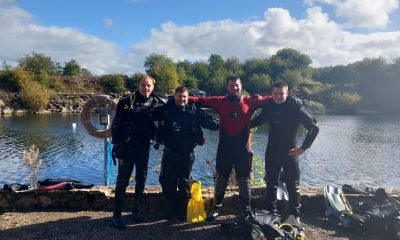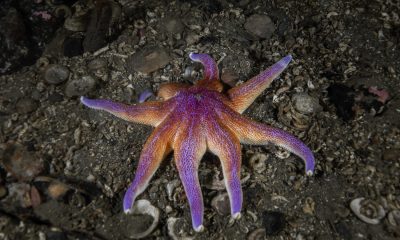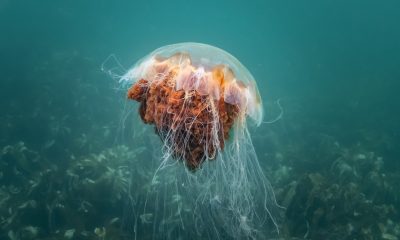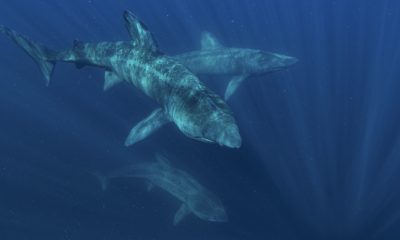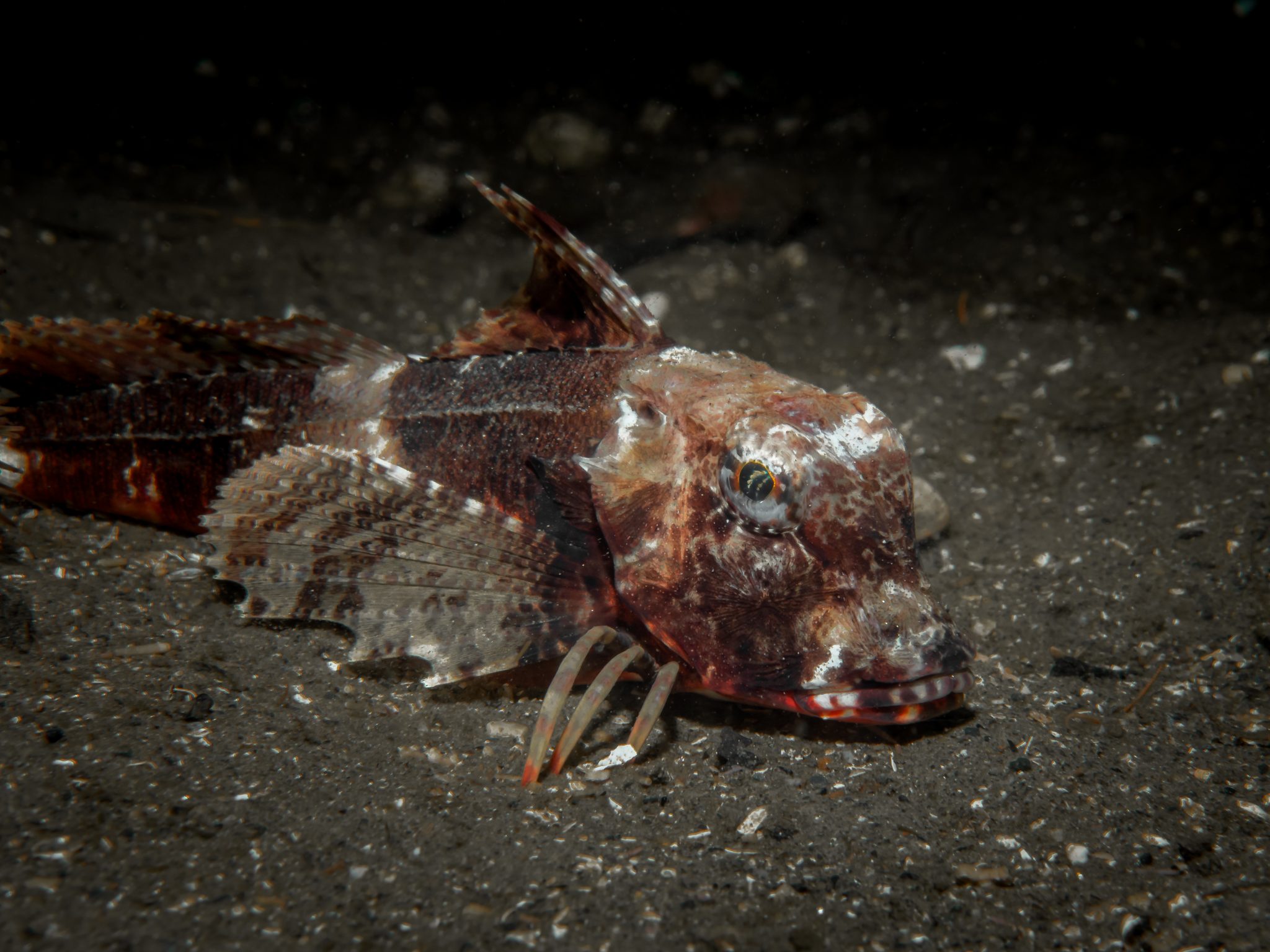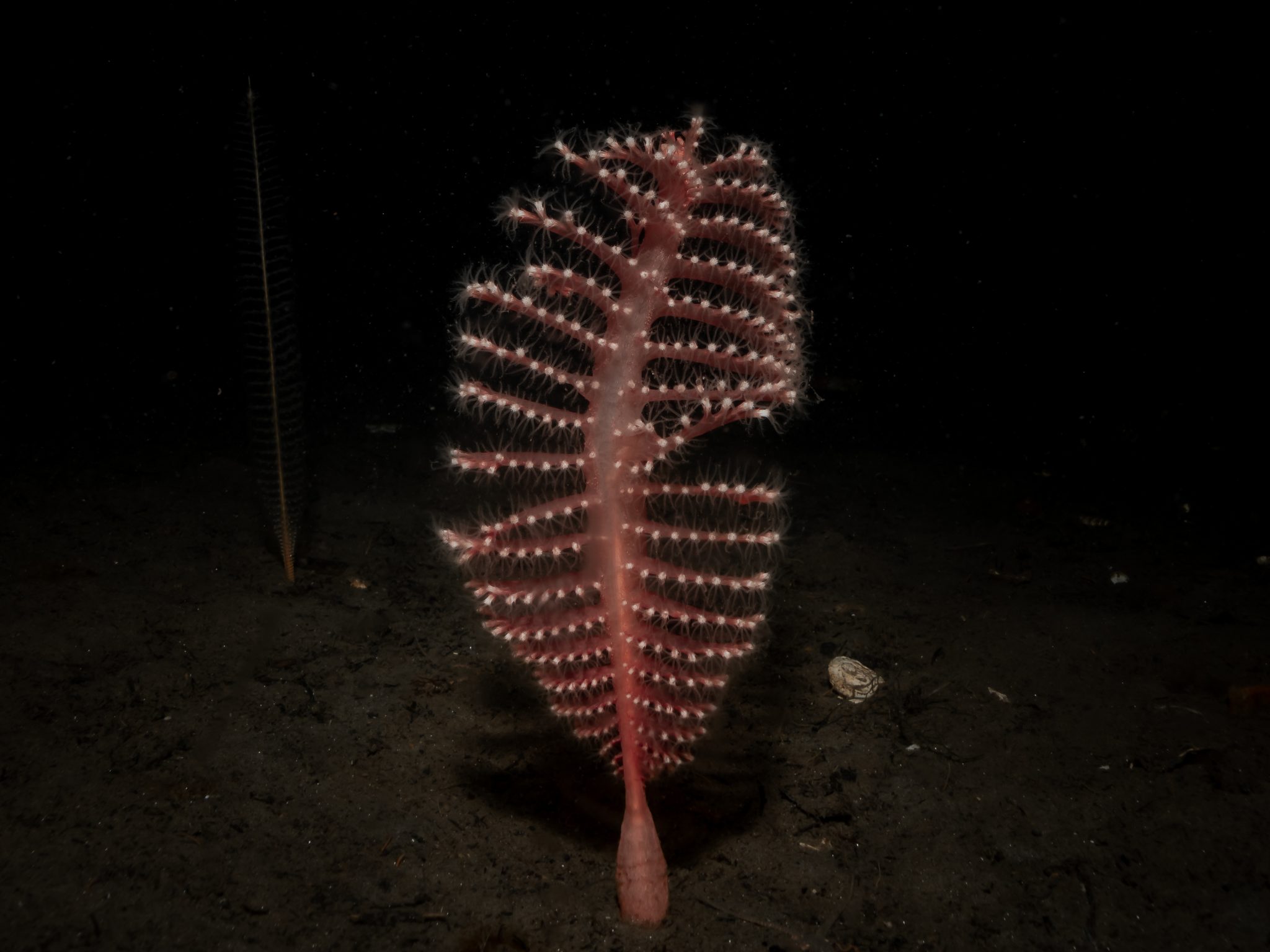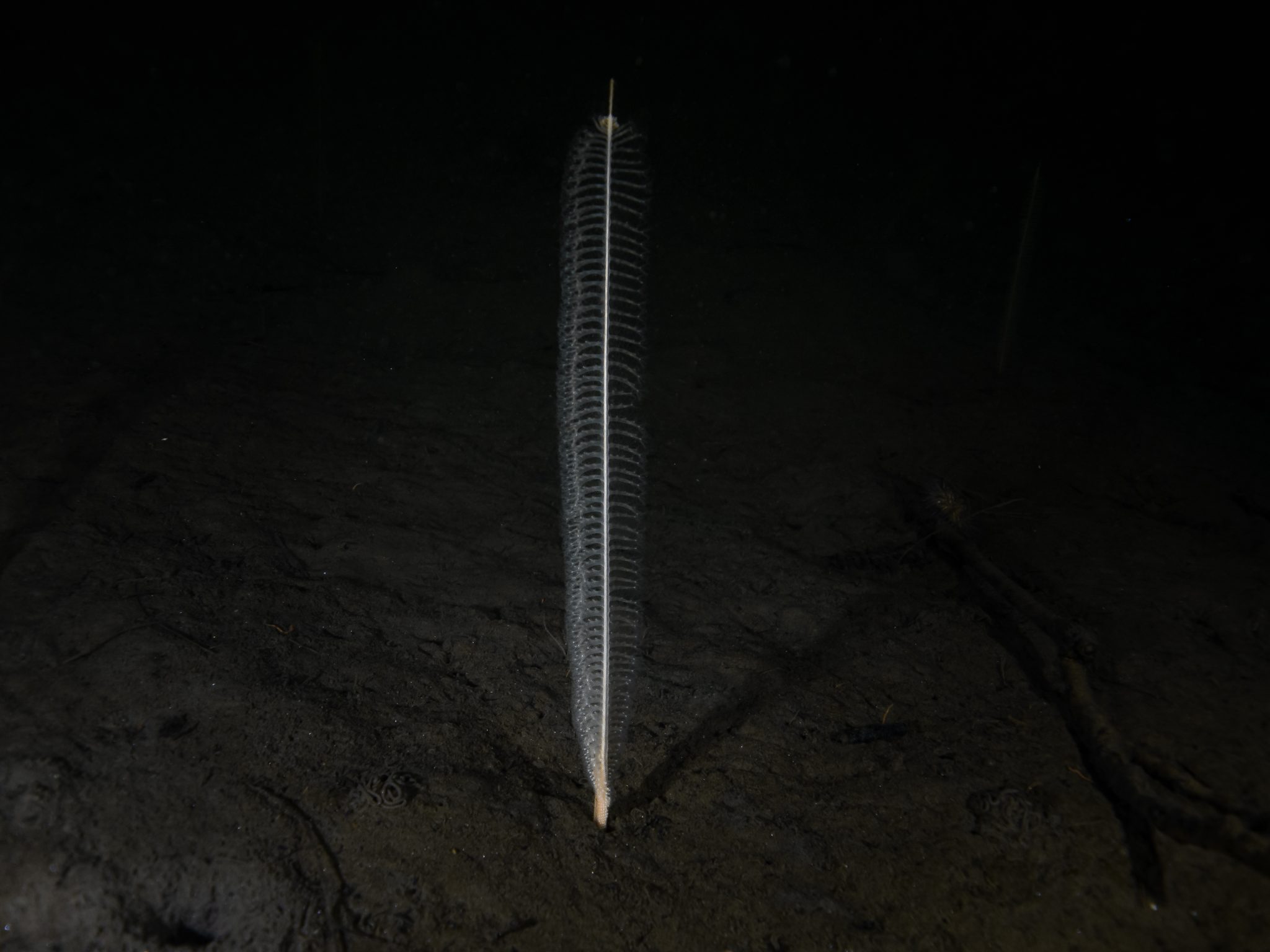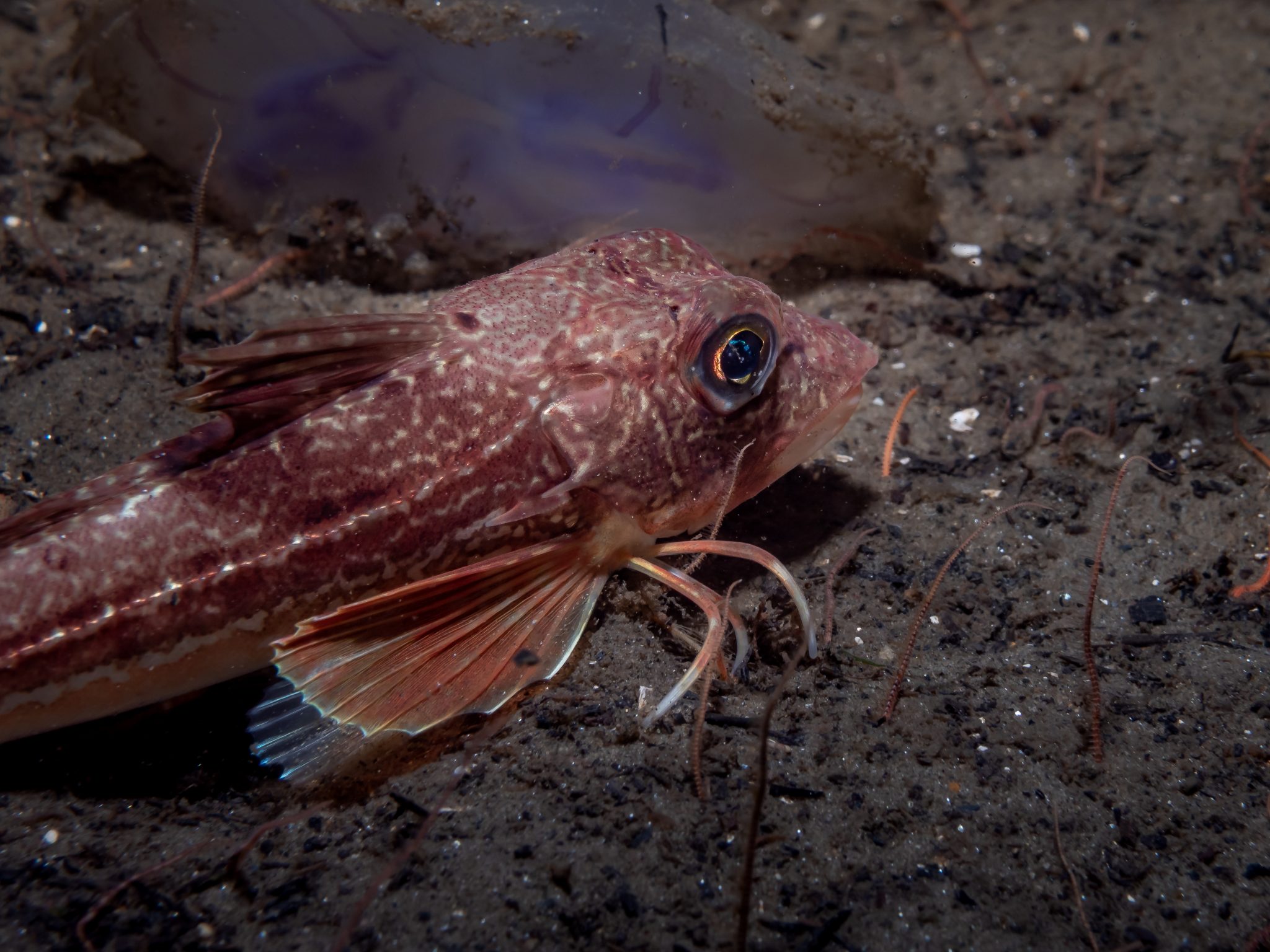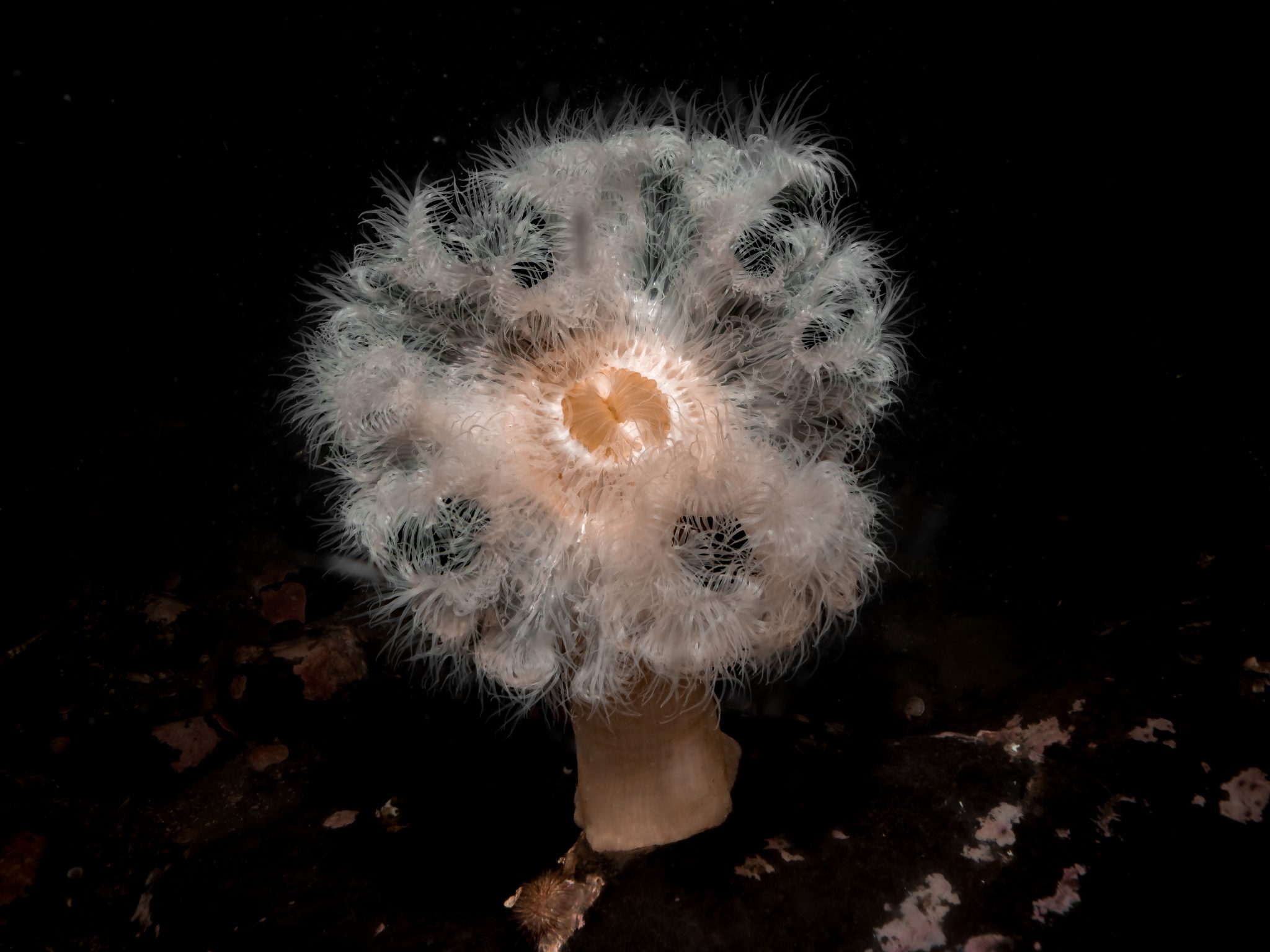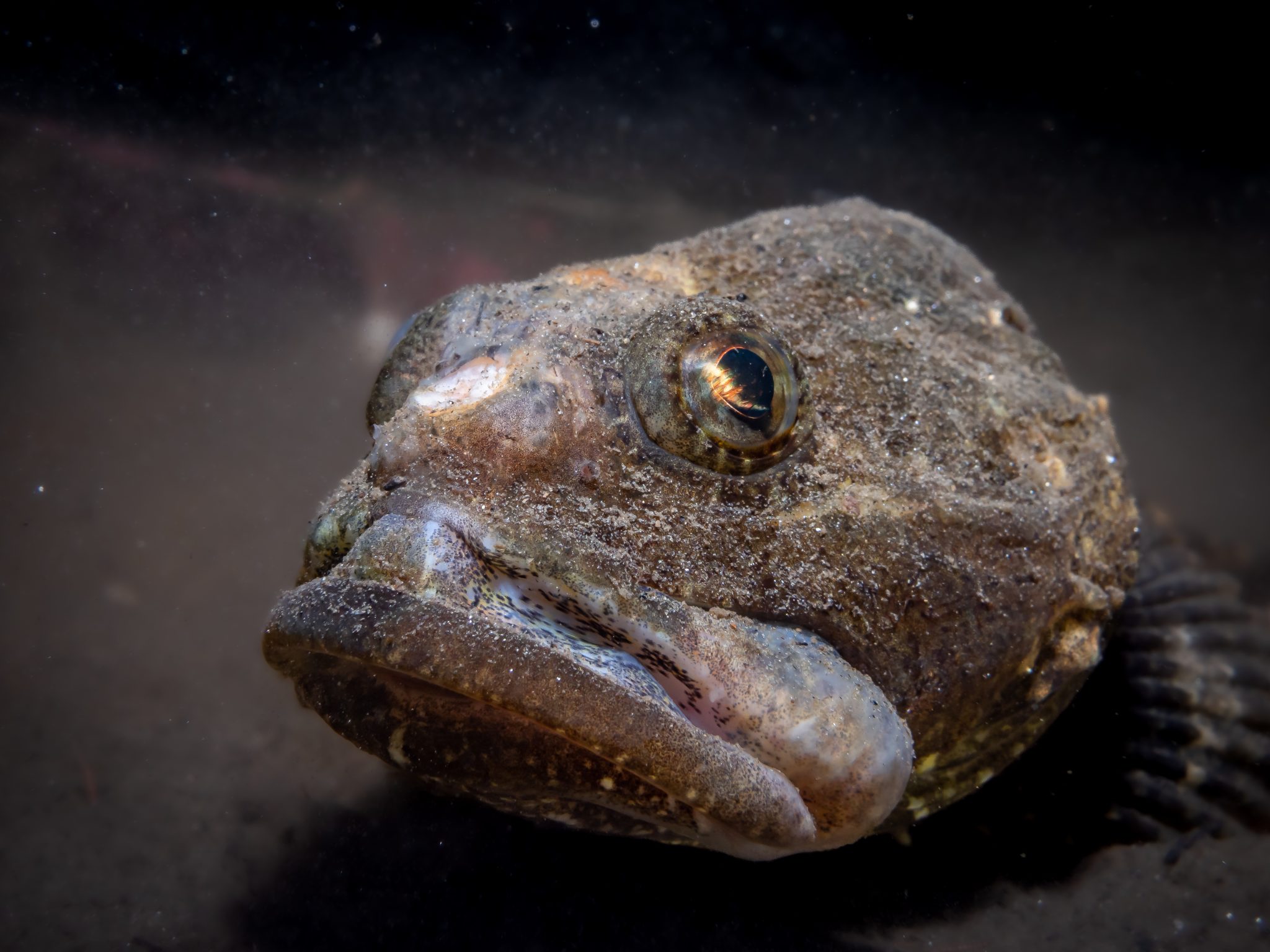Blogs
Diving Loch Long
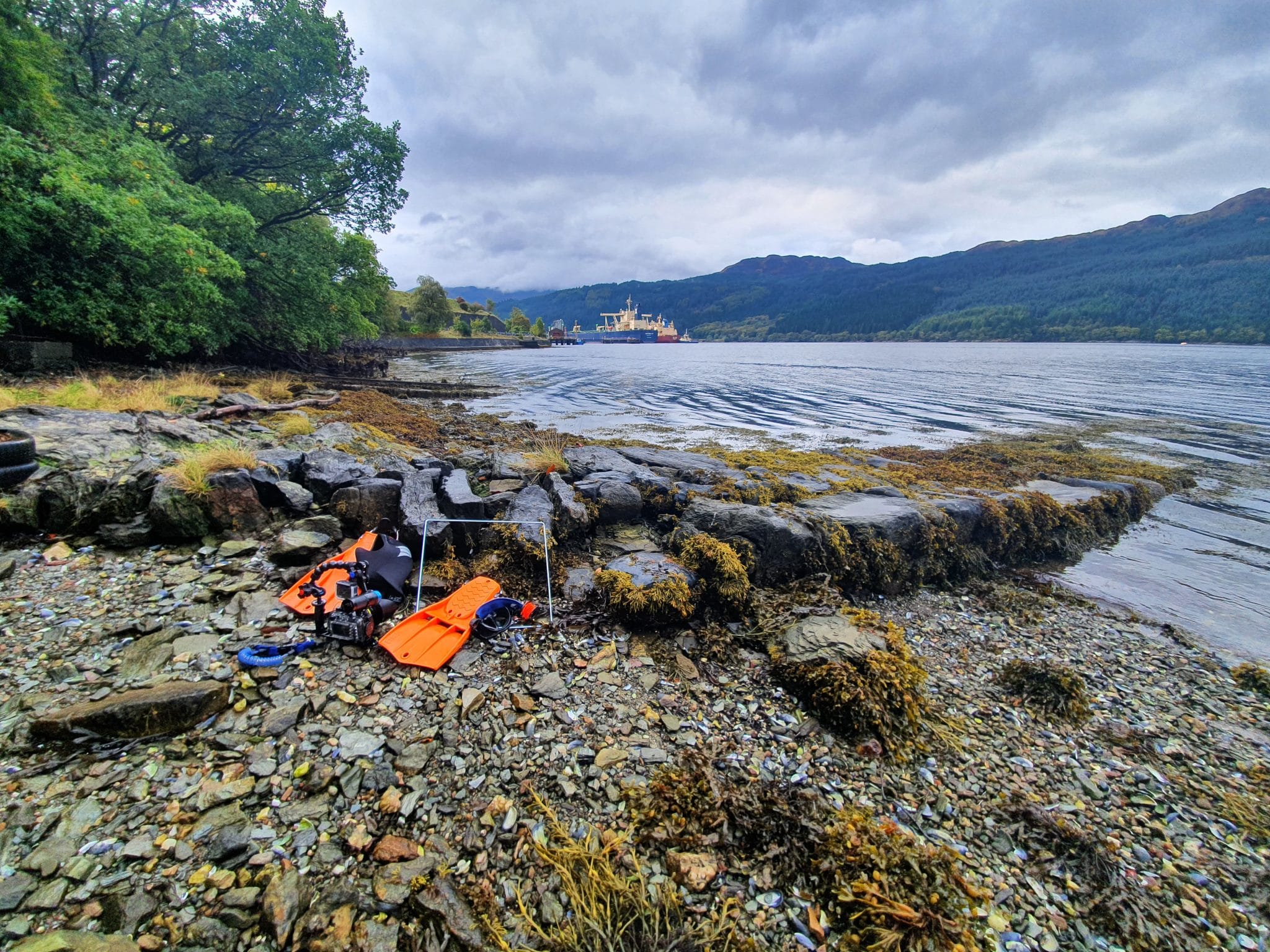
I’m not sure why, maybe it’s just me, but I think sometimes we overlook what we have right on our doorsteps. For some of us we can become indifferent, and in some cases outright loathsome, to things we see and experience regularly, not always fully appreciating what we have close by. When it comes to diving on the west coast of Scotland I think is particularly relevant in regards to Loch Long.
If you’re a diver from Scotland (who dives here obviously) it’s pretty much guaranteed you’ll have dived in Loch Long, whether it be for training/courses or “fun” dives. In fact, I think it’s safe to say if you’re a regular diver here, you’re probably a little fed up of diving in Loch Long. But when I sit down and really think about it, I begin to wonder if we actually take the loch for granted and don’t appreciate it as much as we should!
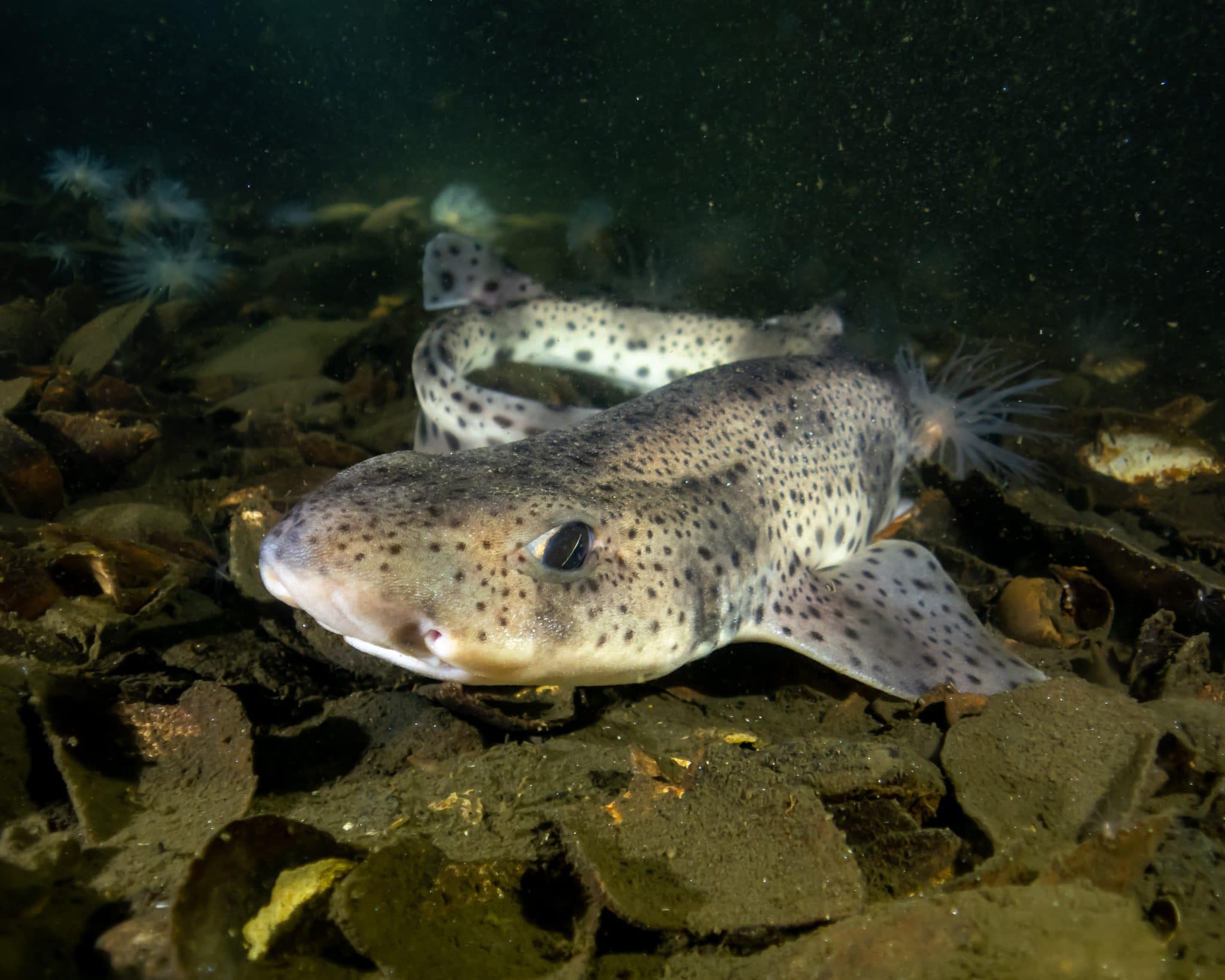
Although at 20 miles long Loch Long doesn’t get its name from its length, actually Loch Long in Gaelic translates to Ship Lake and the name dates back to 1263 when the Vikings saw Arrochar, at the top of the loch, as a key target from which they could drag their ships across land to attack the unprotected settlements of Tarbet.
Anyway… brief history lesson over, back to diving. If you do a quick check of Finstrokes you’ll see that there is no less than THIRTEEN dive sites in Loch Long, that’s a staggering number in one body of water and all within an hour’s drive from Glasgow City Centre. I’ll be honest, until I started researching this piece I didn’t actually realise there were so many, I’ll hold my hands up, I’m no expert by any stretch of the imagination and I’ve certainly not dived all thirteen.
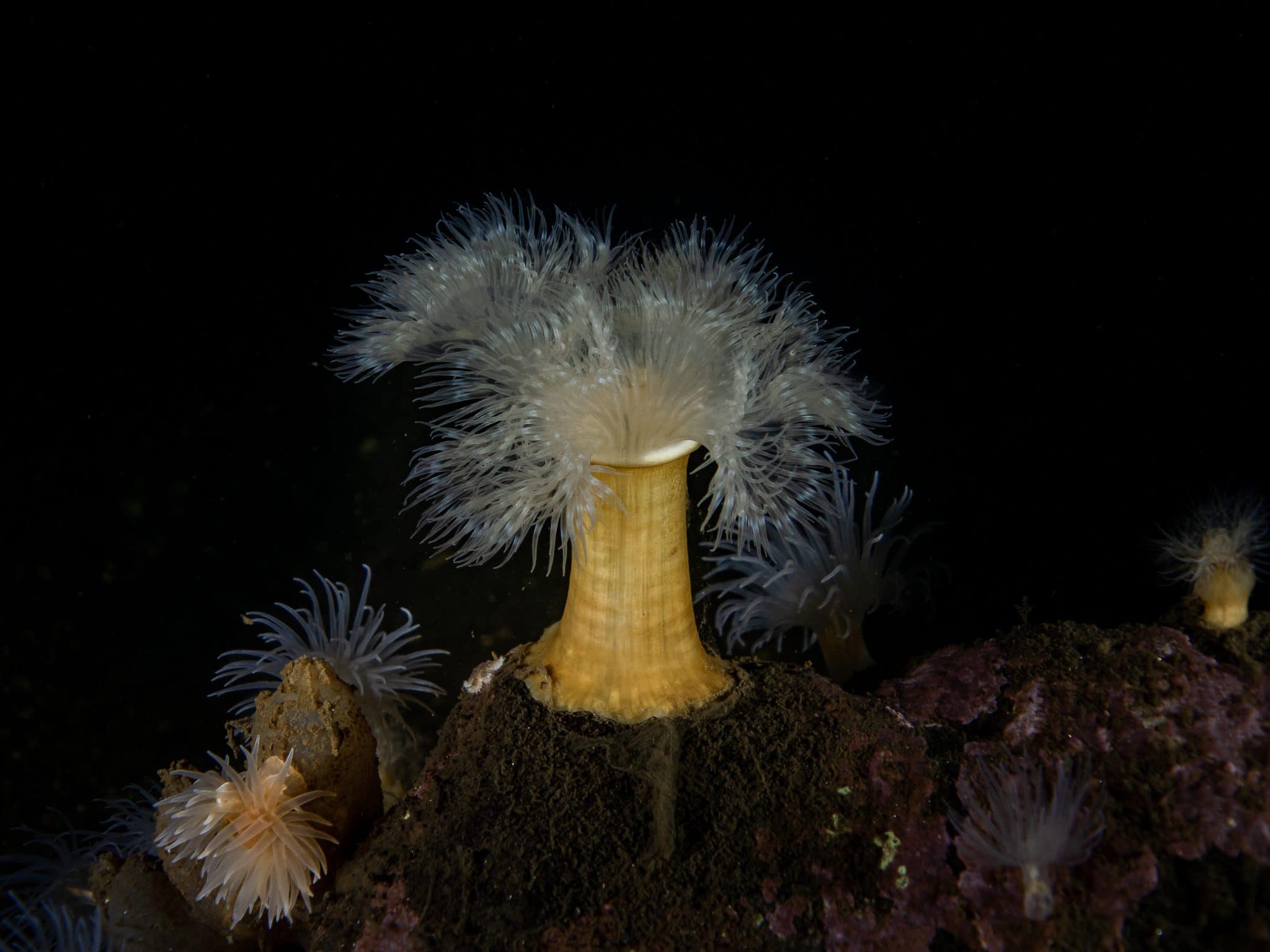
Of the sites, in my opinion, there are definitely four that stand out as and are definitely worth a visit if you are up this way.
As with sites around the country, every club/organisation/dive school seem to have their own names for each one, but I’ll try and give as many names as possible for each site.
Finnart/A-Frames
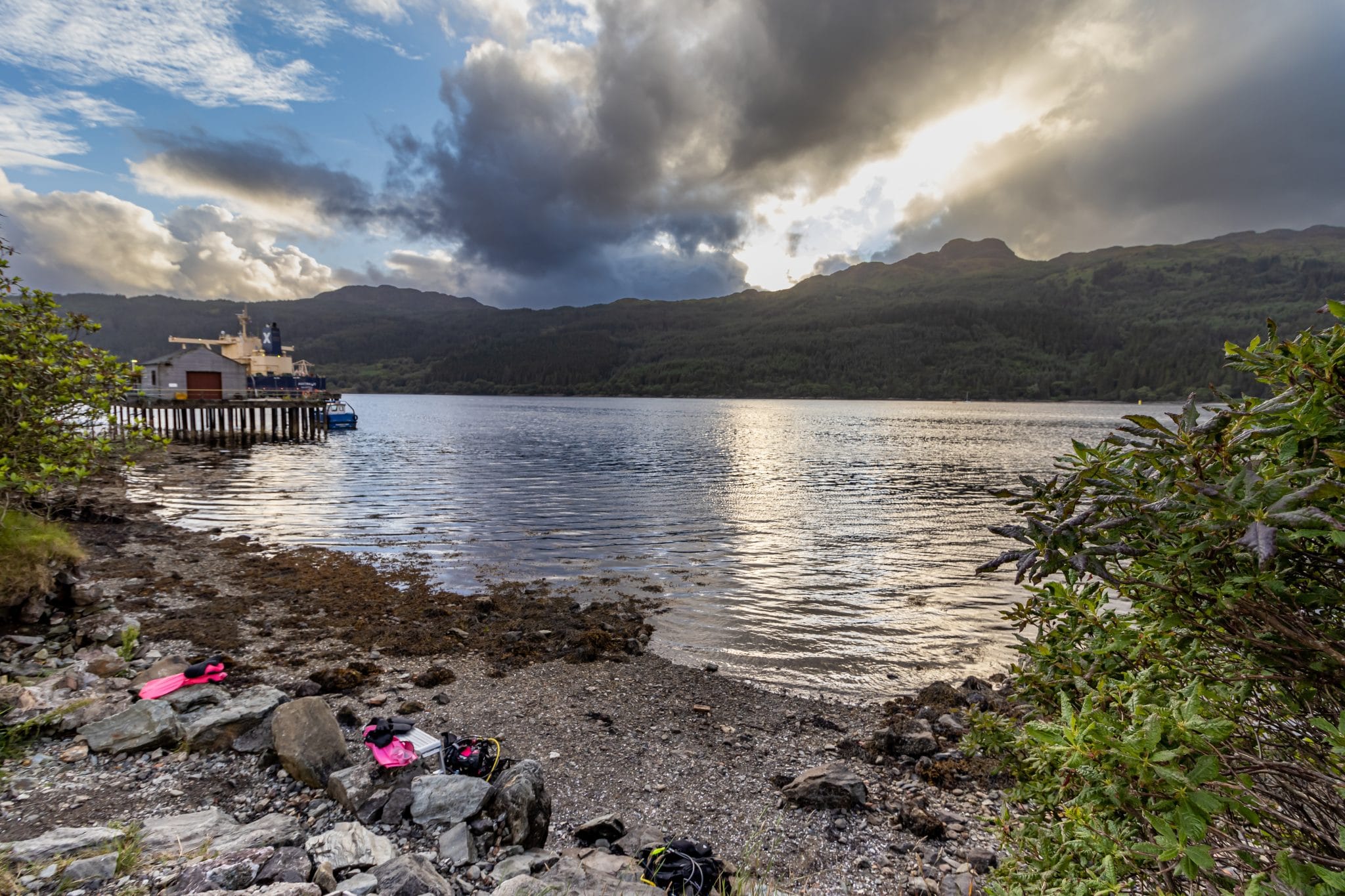
Finnart (sometimes referred to as A-Frames) is probably the most popular site in Loch Long, probably the most popular site in Scotland, and if not the number one, it’s definitely up there. Finnart was built by the Americans during the Second World War to offer a deep water oil terminal within the defensive ring of the Clyde.
Chances are if you’ve taken part in any training or courses here you’ll have at least done one dive at the ever popular A-Frames, but it’s not just for trainees. At A-Frames you’re met with an excellent carpark (which gets VERY busy in the summer weekends) and an entry that’s pretty good by many respects, though the small scramble down to the beach does require a little bit of care.
Once you dive beneath the surface you’re met with an extremely diverse site that has enough to satisfy the newest recruits taking their first breaths underwater, right the way up to the most hard-core experienced divers. With wreckage from the old pier to be found around 8 to 12m there is a huge amount of life clinging to it giving first time divers a superb introduction to the site. If depth isn’t really your thing, then you could spend a full dive in and around this debris field zig-zagging the slope and exploring all the nooks and crannies that are home to squat lobsters, edible crabs, velvet swimming crabs, the list goes on.
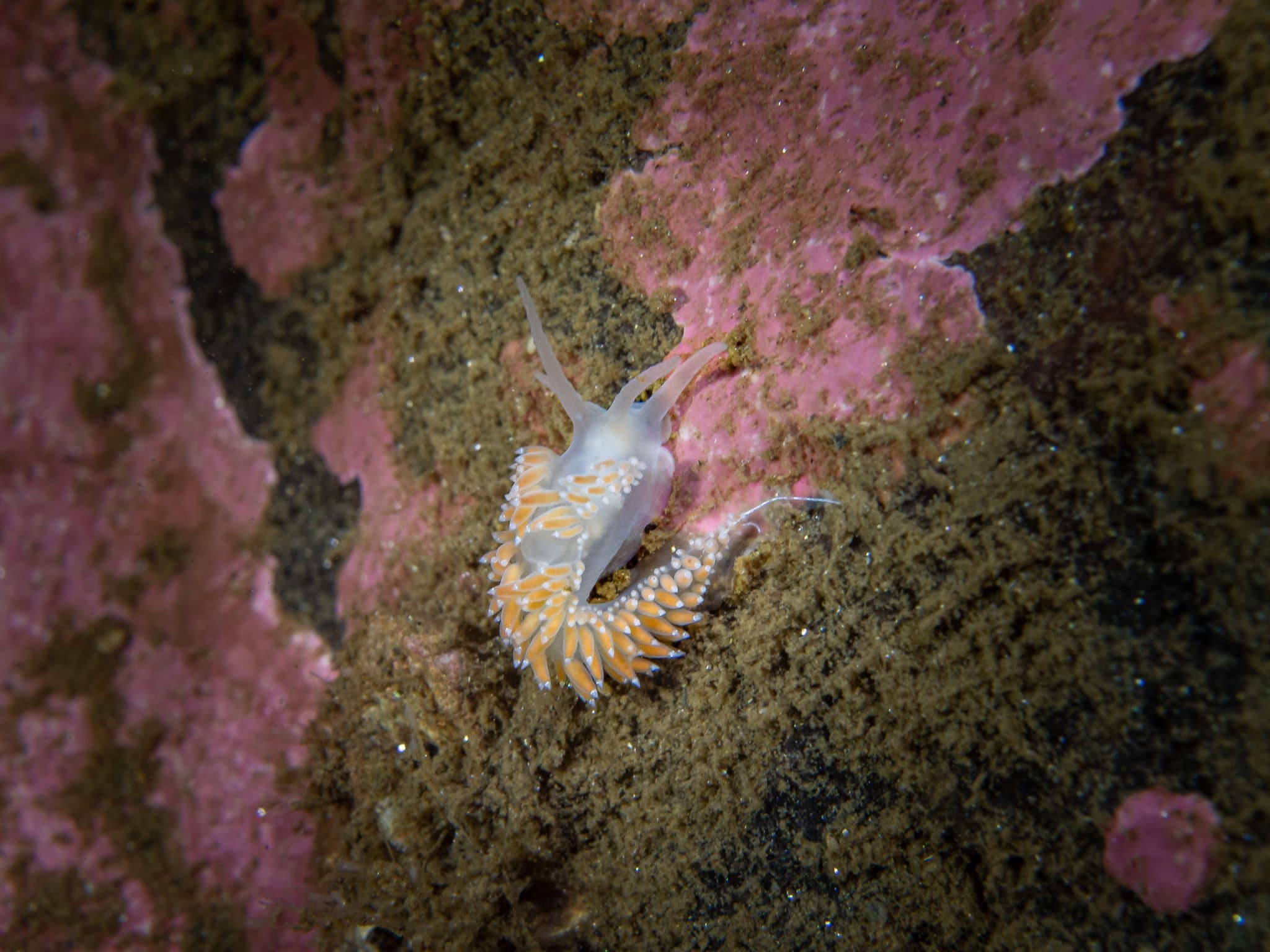
Diving a little deeper (below 20m) though you come across the great A-Frames, remnants of the old pier that lend their name to the site. Out of the gloom these huge structures very often suddenly appear (may have swam into them on one or two occasions… ) and you are welcomed by a vibrant cacophony of life. The frames are covered in anemones, star fish, deadmens fingers and if you’re really lucky the odd nudibranch! A dive around them never fails to disappoint and if you get a day with particularly good visibility the view from the seabed up to the top of them is truly spectacular.
If you are particularly keen to log some deeper dives, there is the option to head out further into the loch from the shore here and it’s easy enough to get +40m and its been known to see some pretty spectacular fireworks anemones at these depths.
29 Steps
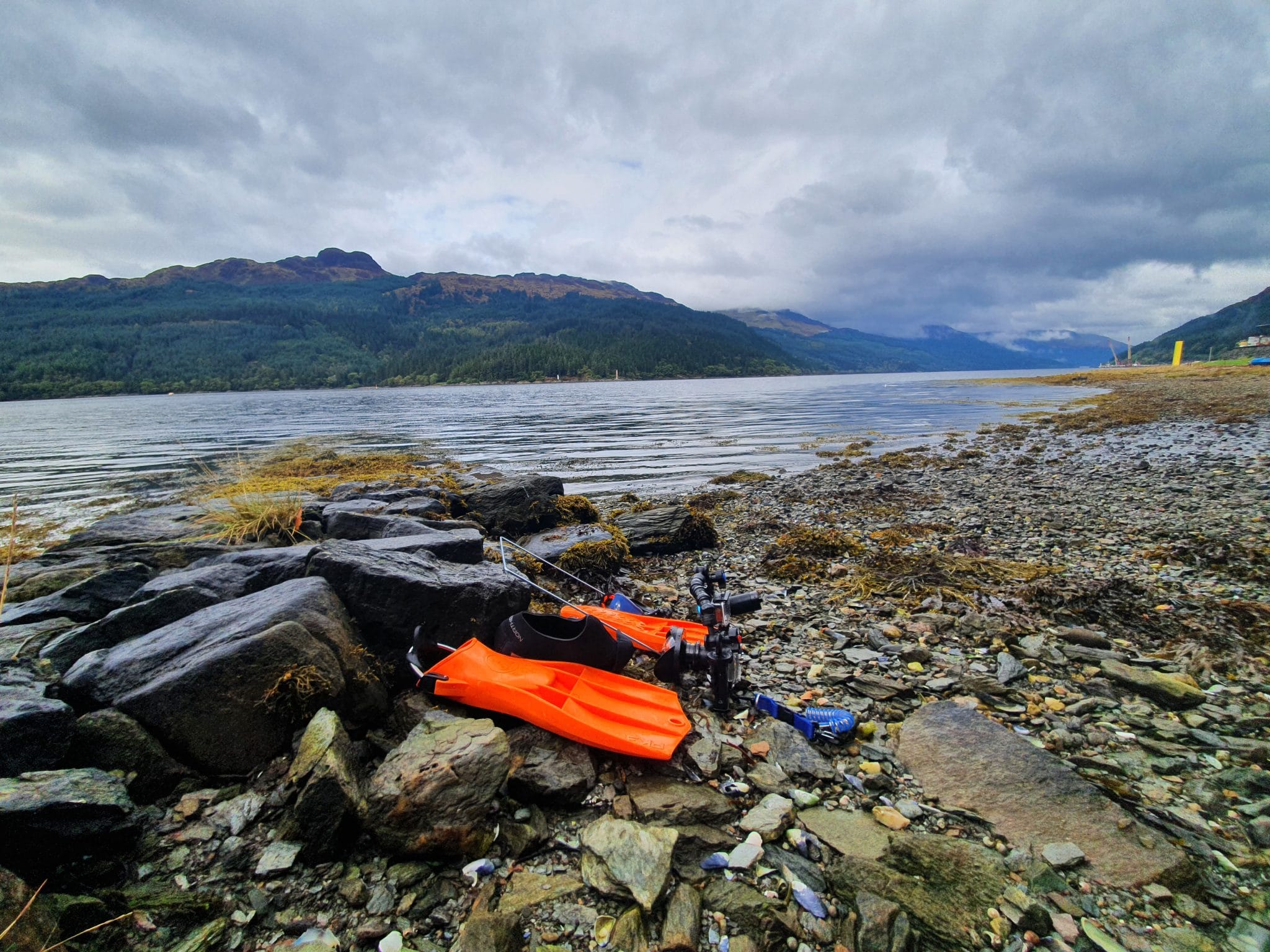
Just north of Finnart is the next dive site on our tour of Loch Long, in fact when I say just north, actually you can swim to it from Finnart… I may have got lost once and ended up at here, but that’s another story. Seen by regulars as more of a training site, and albeit maybe not quite as exciting as A-Frames, 29 Steps does offer a nice dive with a very easy entry and exit and pretty simple navigation.
Getting the name from the 29 steps (in fact there’s actually now only 26) that lead down to the beach from the road, the main hazard here is the steps themselves that can be quite slippy when wet, but apart from that once you reach the bottom you are met with a rather nice wee beach with the remnants of an old jetty stretching out into the water. The old jetty wall offers a convenient perch for dive gear and there is even a wee sheltered archway that can be used to escape the rain on a dreich Scottish dive day.
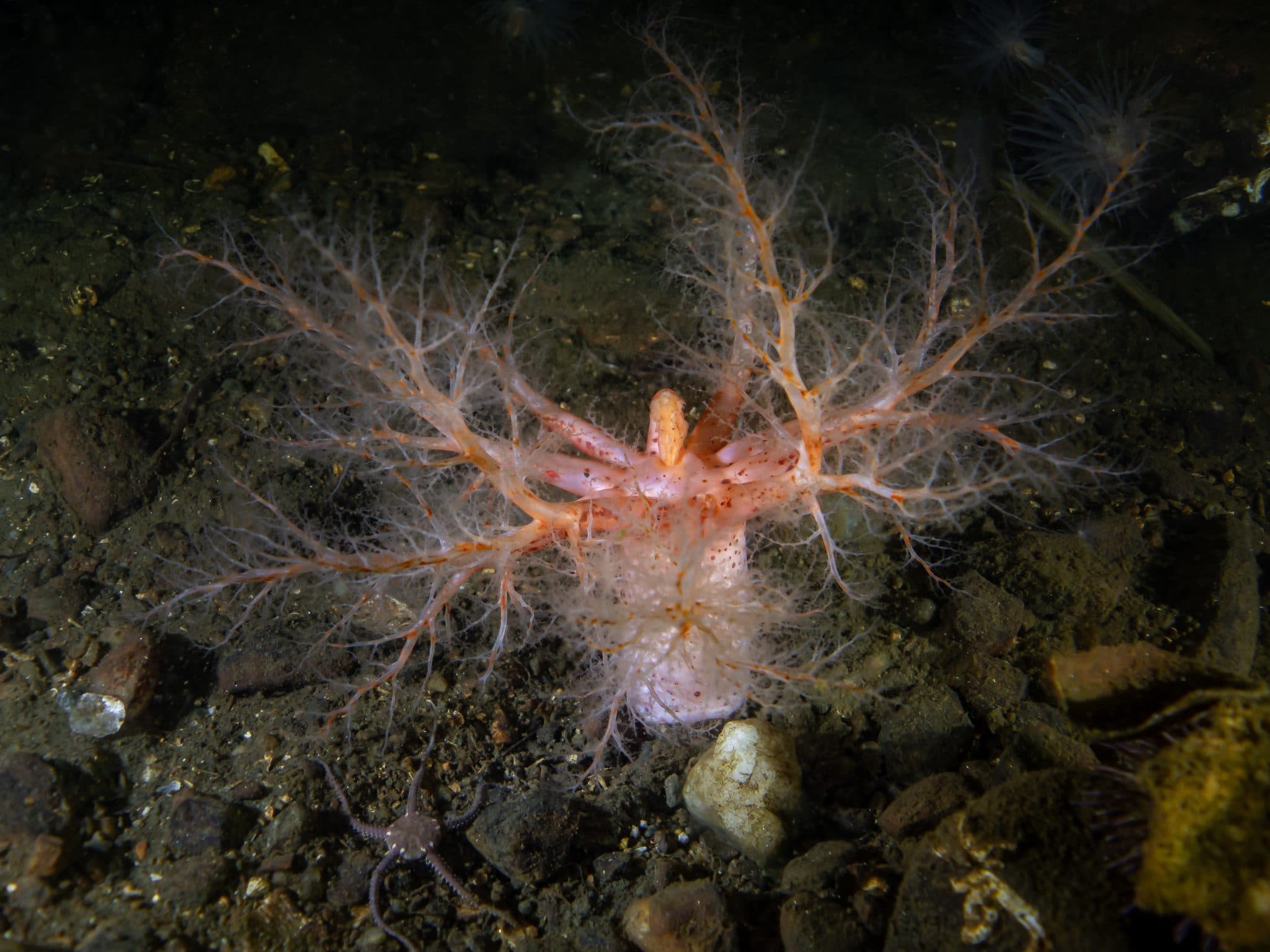
The main dive here is straight out from the beach down a gently slope to platform at around 9m which offers an excellent base for doing training and skills. Although not as much life on the platform (well it is regularly used for training), velvet and edible crabs can be found in and around it with a few other bits and pieces as well. From the Platform there is two options.
Option one is to follow the slope downwards as far as you like, where again, you will find the usual life of crabs, squat lobsters, starfish and even the odd fireworks anemone and langoustine at depth and then turning left to zig zag back up.
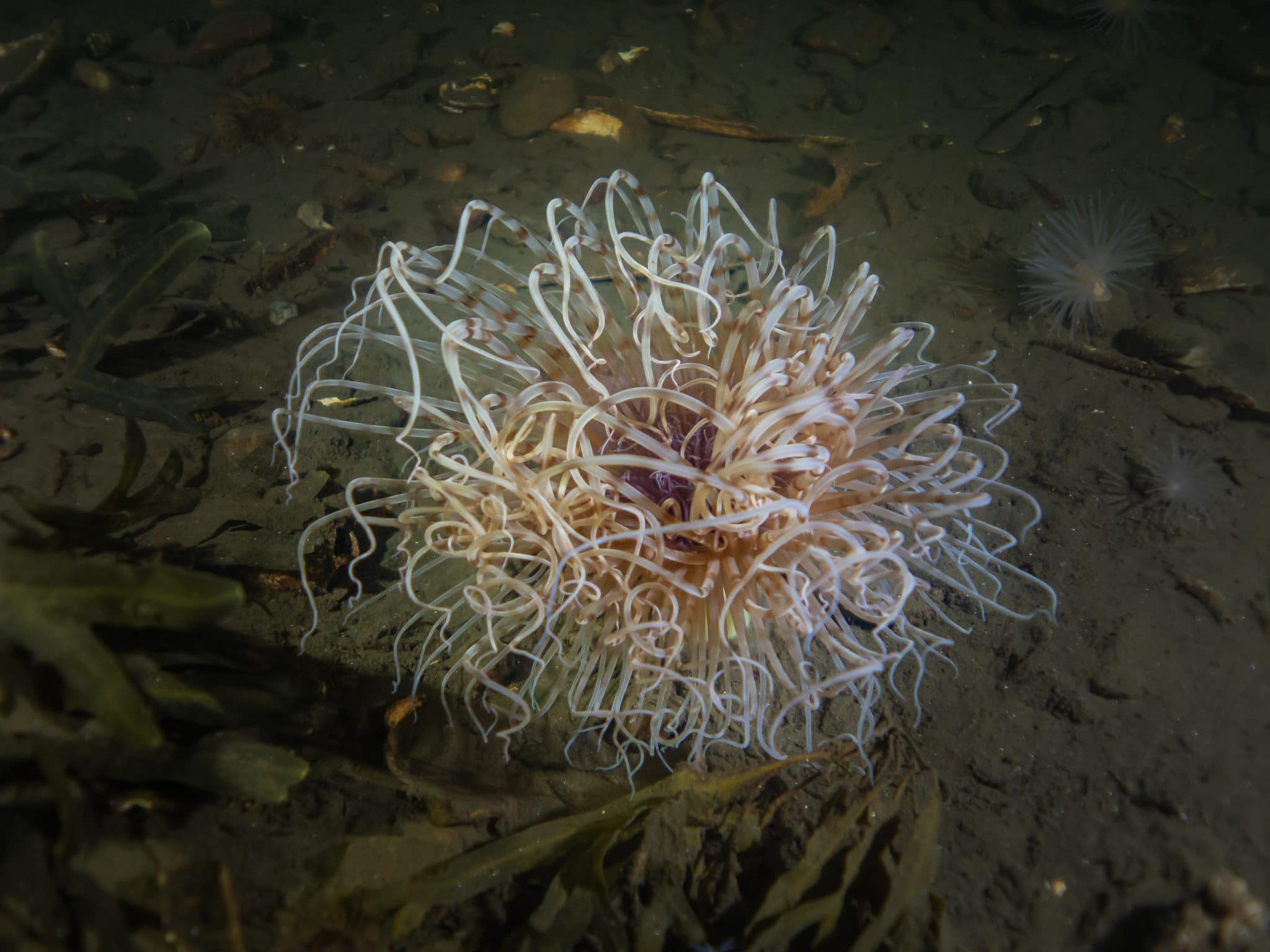
Option two, which can also be done along with option one is to continue down a little deeper from the platform and then bear left perpendicular to the slope. Finning along you will eventually come to the “wreck” of an old rowing boat which offers a nice habitat for the usual critters and even, if you’re really lucky, the odd flatfish in amongst the debris. On the way back to the entry/exit point, there is also an “artificial” reef of some old discarded dive tanks in the sand that also allows for a wee bit on investigation.
Maybe not quite as exciting a dive site as its near neighbour Finnart, 29 Steps is sometimes undervalued and does offer a nice alternative if you come to find A-Frames “mobbed” when you arrive, as it often can be at weekends.
Twin Piers
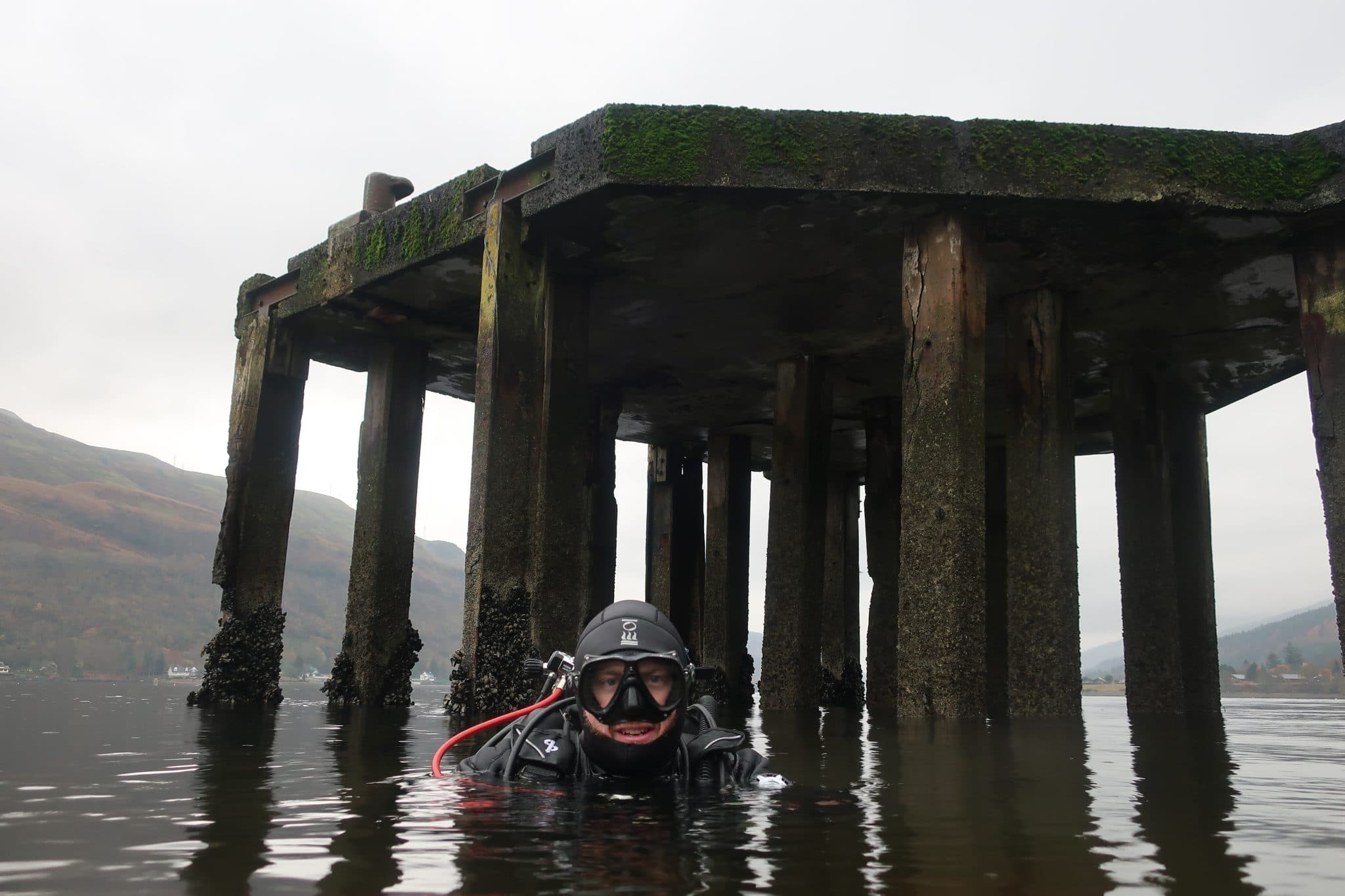
Heading to the top of the loch and round onto the west side you eventually come to the dive site Twin Piers. Once you arrive it’s pretty obvious where the name comes from. Sitting just off the beach is the remains of, funnily enough, two piers. Lying in the shadow of one of Scotland’s most popular hill walks the Cobbler, both Twin Piers (and Conger Alley) can very often offer sights just as spectacular beneath the waves as you can expect from the mountain that towers over it.
Parking for Twin Piers can be a little bit tricky if you happen to turn up on a particularly busy day. This requires driving ever so slightly past actual entry point and onto the grass verge on the side. This also leads to one of the main hazards of Twin Piers the extremely busy, and fast, road it sits on. There is an excellent path which leads back to the entry, but I would still strongly advise care be taken when walking to the site with heavy gear as both lorries and coaches often travel at speed along the road. The beach itself actually sits on a lower level to the road/parking area and so the second main hazard of the site is found. A ladder has been place and secured from the original “entrance” of the pier and a handle has also been drilled into the wall to help with the climb down. In all honest it is not a major issue, but is still worth mentioning.
Ok, so onto the diving! Twin Piers is an excellent site for divers of all abilities and navigation is pretty straight forward. From the beach head straight out between the two piers and drop down. On the slope you’ll be met with a carpet of discarded bivalve shells which is pretty impressive in its own right. Continue down the slope to anywhere between 10 to 15m or so and then bear left perpendicular to the slope. If you are lucky you will eventually hit the chassis and axels of an old truck which fell off the pier.
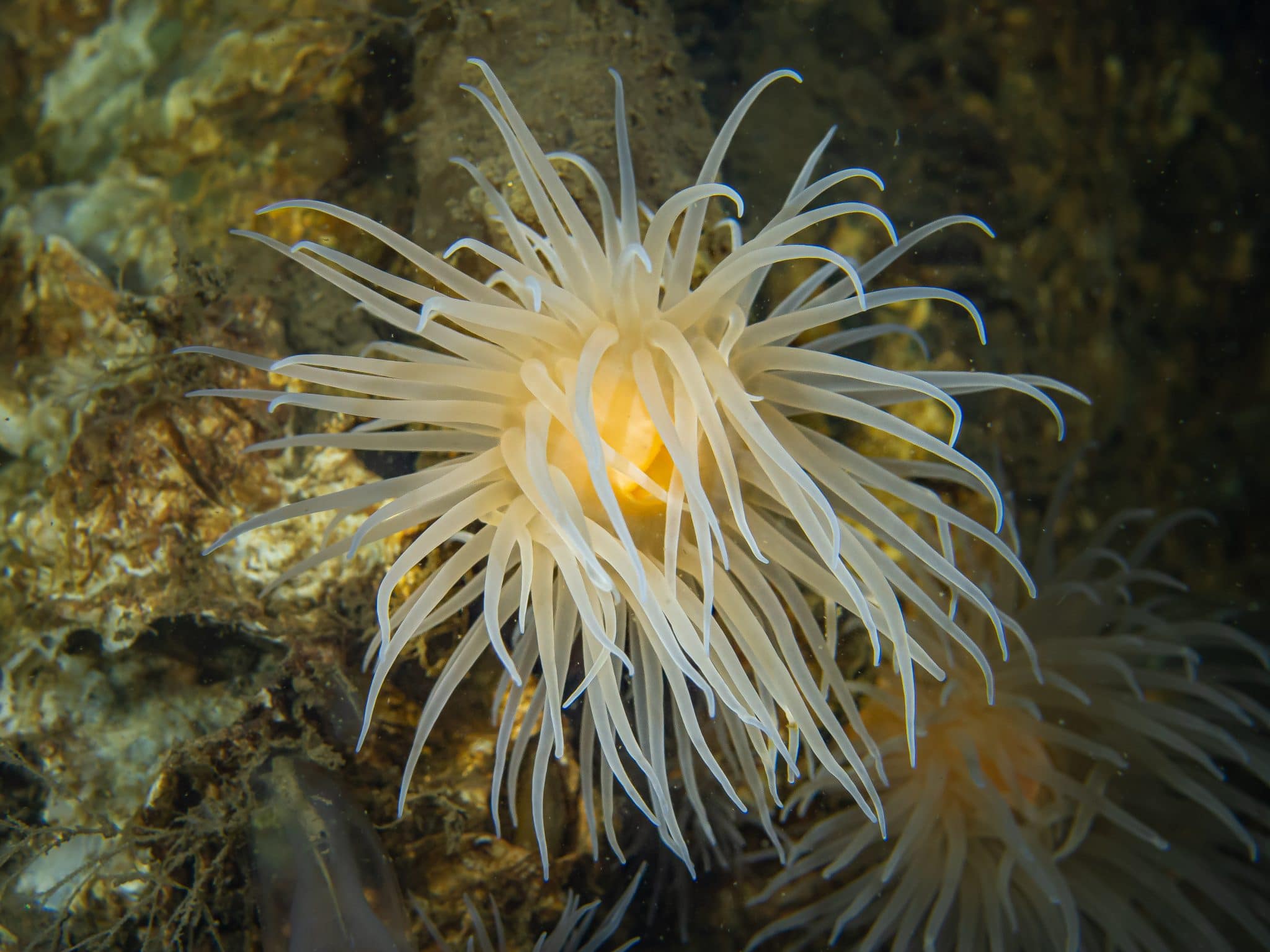
From here I’d suggest heading down to between 15 and 20m and continue to swim perpendicular to the slope until you eventually reach a rather excellent rocky reef. The boulders here are huge and offer a fantastic habitat to a whole array of life from the usual crabs, squat lobsters, anemone, starfish, deadmens fingers, etc. But the real attraction of Twin Piers is the possibility of seeing conger eels and even the odd lobster. These make their homes in the larger cracks in, around and under the huge boulders. Zig Zag up the reef and then once you’ve reached the time for a return simply retrace your steps… or should that be finstrokes? Depending on the tide state, if you come up to around 6m and swim back along you can’t fail to hit the legs of the piers, which offer a rather nice final exploration of the site during your safety stop.
On a nice day (both above and below the water), with the sun breaking through the water around the piers themselves are absolutely spectacular. The legs are awash with vibrant colourful life ranging from starfish to anemones and even the odd nudibranch if you’re lucky!
Conger Alley
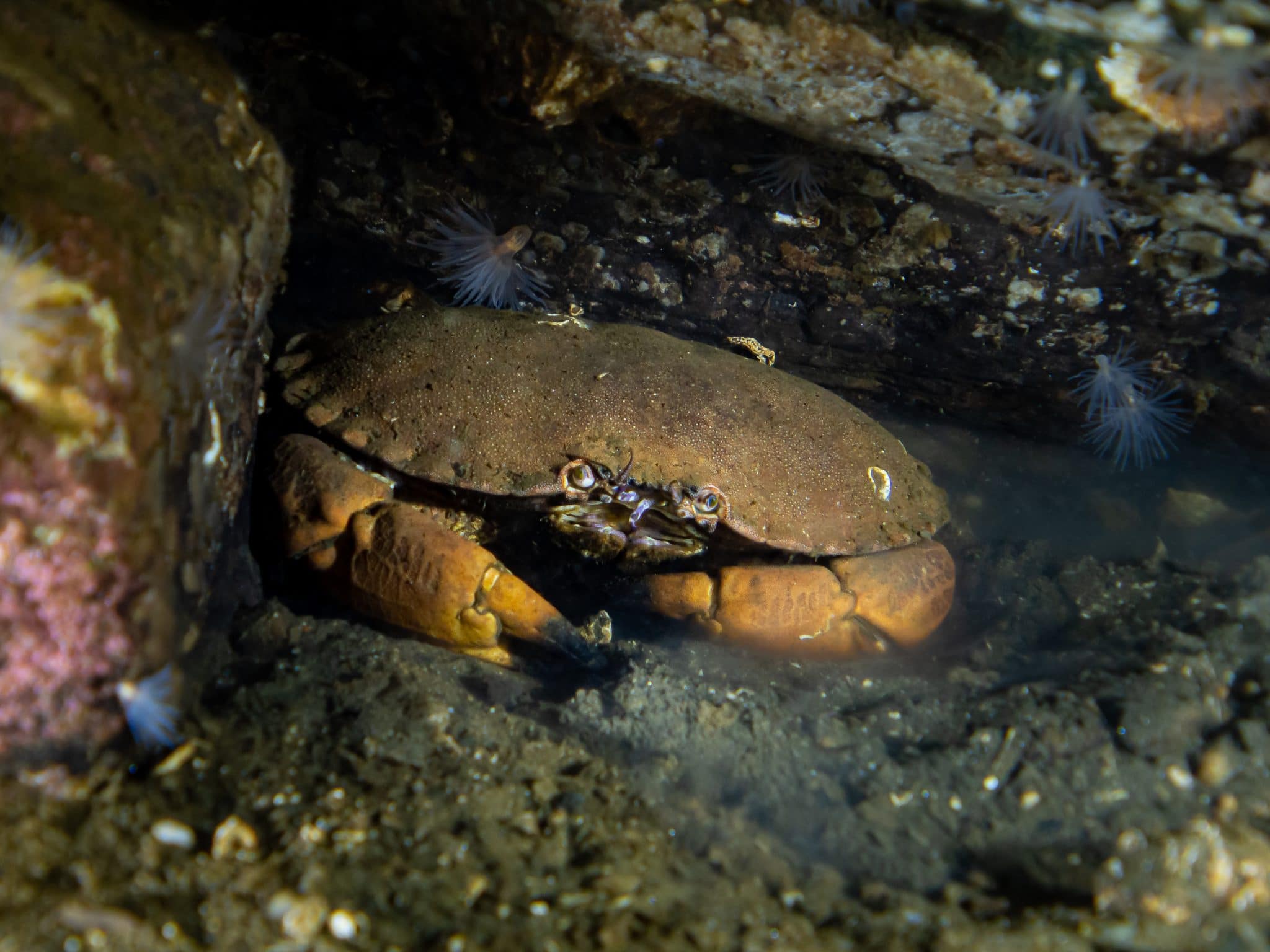
Wonder what we might find here? Heading just a couple of minutes south down the road from Twin Piers along the west side of Loch Long you eventually come to my favourite dive site in the loch. Now blink here and you could very well miss the entry and although I did mention the road as a hazard at Twin Piers, on the grand scheme of things it wasn’t a huge concern, however here at Conger Alley you do need to really be careful.
Parking for the dive site is actually on the opposite side of the road to the loch in what can only be loosely described as a small muddy layby. Now at this particular spot there is only really enough room for three cars at a push, but on the way to the site you’ll have passed a bigger, “proper” layby that can be used instead, however parking here will involve a wee bit of a longer walk back to the site, but it is worth it! Crossing the busy road does require care though so I would strongly suggest carrying your kit down to the beach and getting kitted up here as opposed to at the car and then crossing the road with hood, etc on. Thankfully the beach itself offers some rather strategically place rocks that can be used to prop gear on and even a very handy seawall that helps “step into” a twinset.
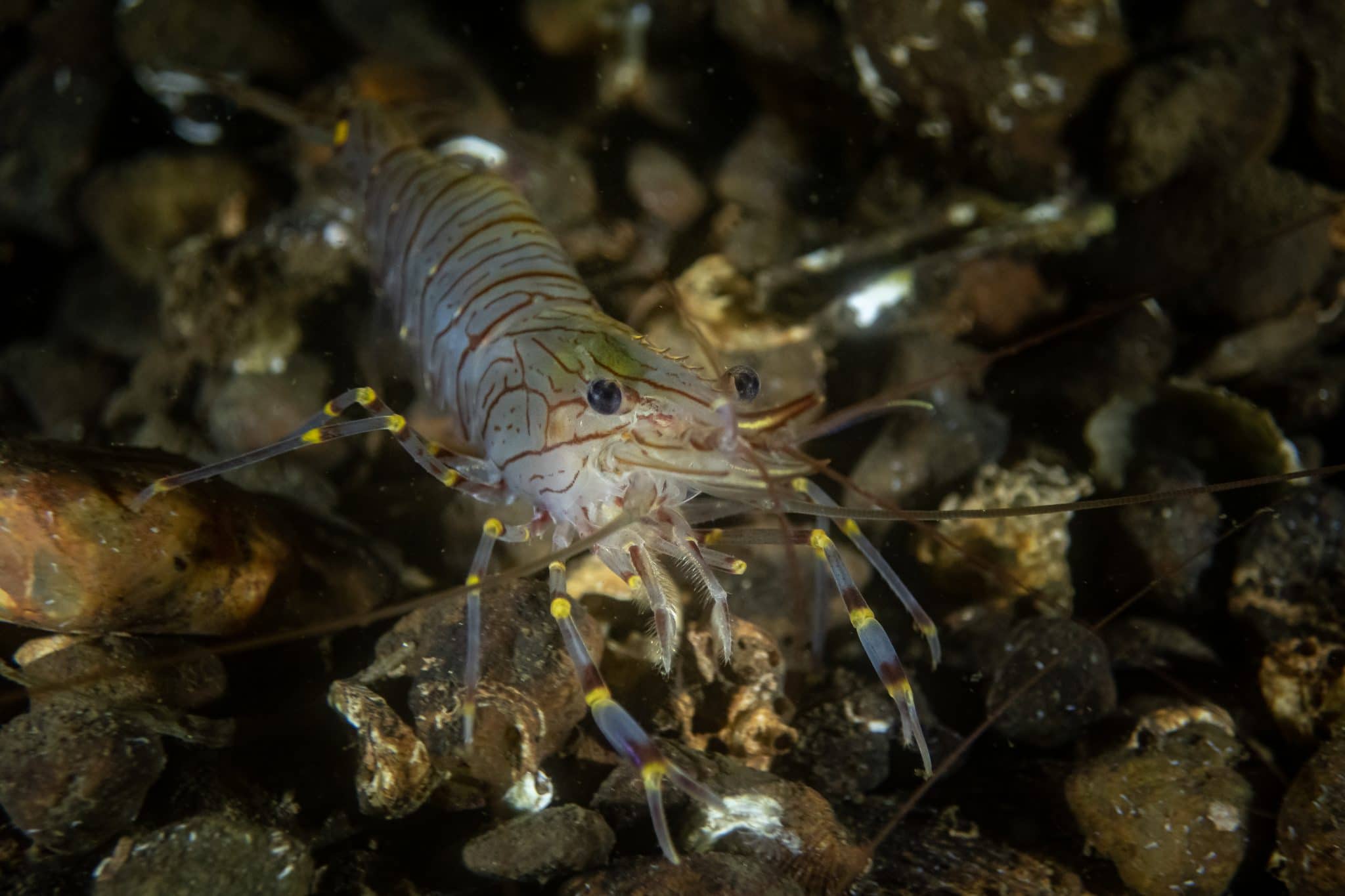
Again like all the sites I’ve discussed the entry is really easy here. Simply walk into the water, drop down and follow the slope to I would suggest, about 12 to 15m and swim left for around 4mins. You eventually come to the edge of a rather large rocky reef and from here it is totally up to yourself how deep you want to go. If your certification allows it I would recommend dropping down the reef to around 26 to 30m and then slowly zig zagging your way back up it taking your time to look in all the cracks and crevices.
I genuinely don’t think I’ve ever had a bad dive at Conger Alley and the life on the reef is unbelievable! There’s obviously the usual crabs, starfish, anemones, etc, but as the name might suggest there is a really good number of congers, and lobsters, to be found in the larger holes. Take your time to search each as they can be a little shy, but they are there. It’s also not uncommon to find the odd octopus lurking around on the rocks, so look carefully.
There’s also an abundance of fish as well from flatfish to sometimes rather colourful wrasse. Again, like at Twin Piers, gradually come up the reef and then once you’ve reached the end head back along the slope in the opposite direction to you came and you’ll eventually reach the exit.
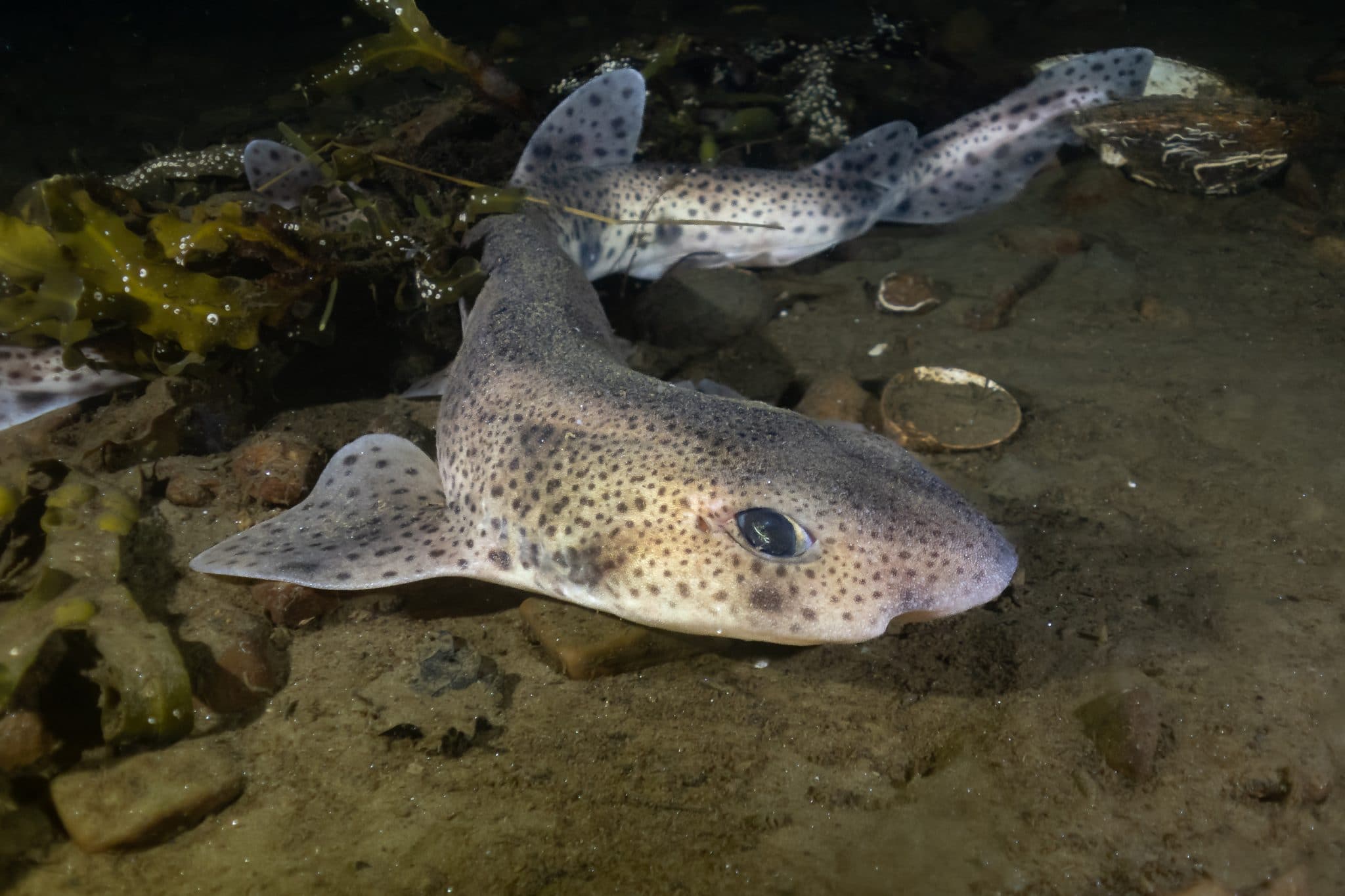
Obviously these four sites are probably the most popular and accessible to the vast majority of divers, but they really only offer a small taste of what this 20 mile loch has to offer. From the shore there is up to approximately nine dives to choose from on Finstrokes and if you have access to a boat, or are able to book onto a charter such as Wreckspeditions based in Dunoon, there is the potential for even more sites to be discovered.
With such close proximity to Glasgow and situated just next to Loch Lomond, and all the amenities it has to offer, there is also the possibility of overnight stays in campsites and lodges in the surrounding area for those coming from further afield. Loch Long offers divers an abundance of choice within easy reach that can sometimes can be overlooked and underappreciated.
For more from Ross, follow him on Instagram @underwater.ross and on Twitter @outdoorsross.
Blogs
Diving in Loch Leven
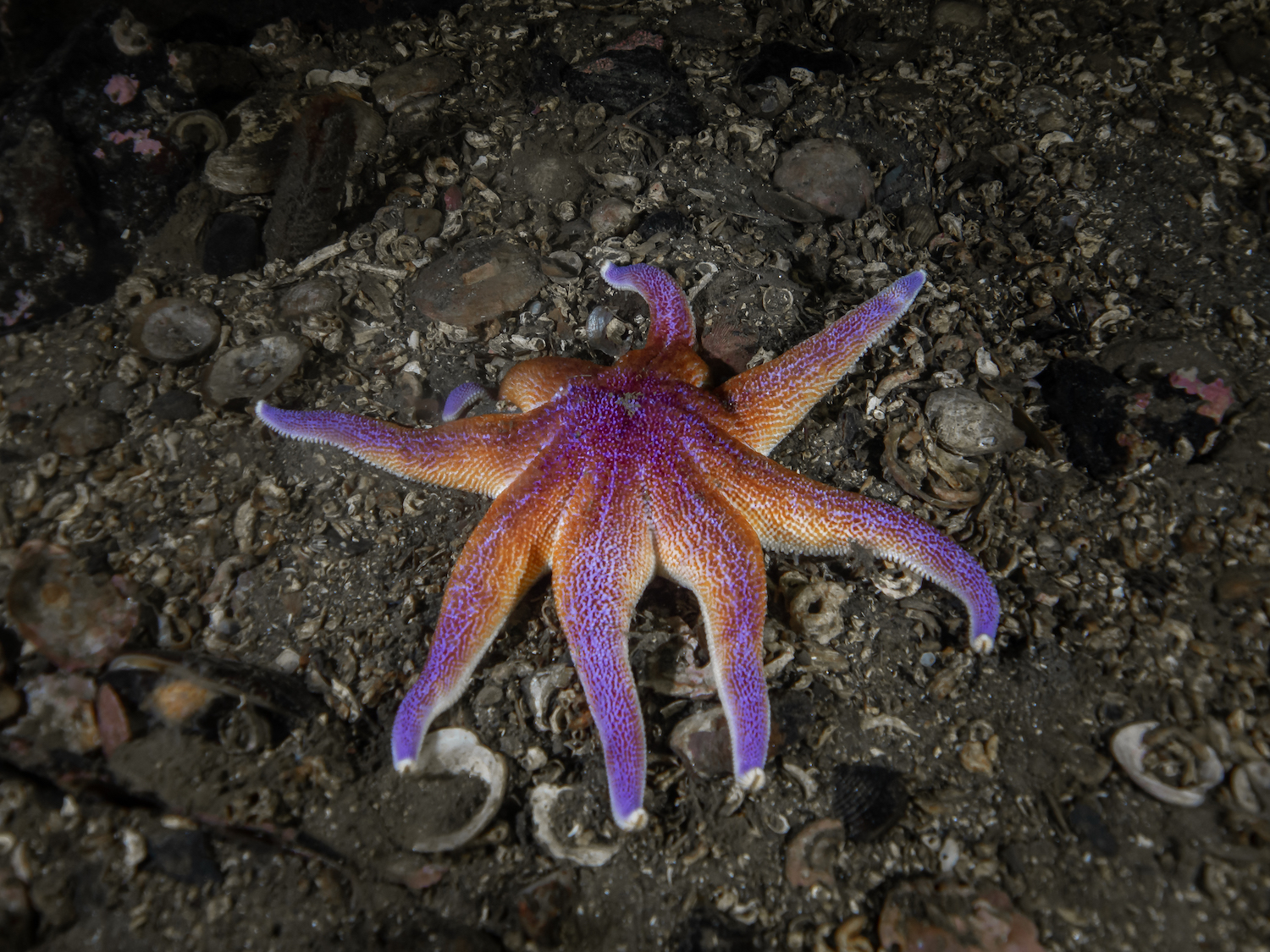
I don’t think I’ve driven a road that encapsulates Scotland’s beauty and diverse landscape more than the A82 from Glasgow to Inverness. This incredible road runs along the side of the picture-perfect Loch Lomond, across the rugged landscape of Rannoch Moor, cuts through the breathtaking Glencoe, opening out onto the sights of Loch Leven before continuing to Fort William, up the banks of the mysterious and magical Loch Ness before finally reaching Inverness. It’s a road that’s travelled by thousands of tourists every year and all along it you’ll see cars pulled up and people with cameras and phones out looking for that insta-perfect photo.
But, what so few people realise is, as well as showing off Scotland’s landscape, the A82 also has some stunning diving just off it as well! Ok, this is where things get a little confusing, so let me clear this up just now. Scotland has two Loch Leven’s; one is in Kinross and is landlocked whereas the other is about “halfway” up the A82 at Ballachulish and is a sea loch, and it’s this one I’ll be talking about.
Along the banks of Loch Leven there are several dive sites which show off the incredible beauty of Scotland’s underwater world and are more than a match for the rugged magical “surface” landscapes that surround the loch. Now I’ve personally only dived three of the sites, and sadly one is inaccessible anymore due to development work, but the other two sites, along with the one called Manse Point I haven’t personally dived (though am reliably informed), still make the trip well worth it.
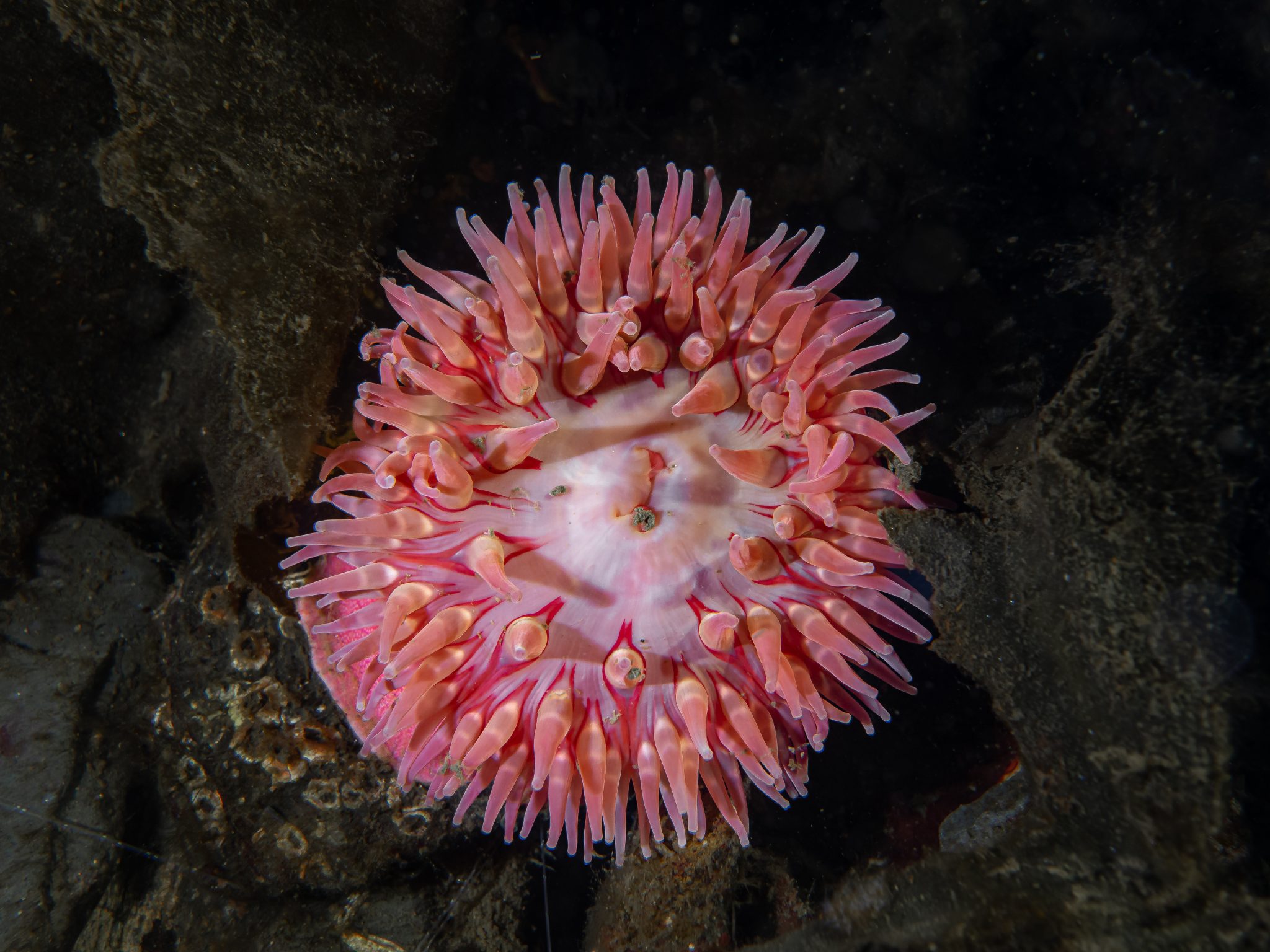
Carnoch Bay is, as the name suggests, a bay which literally offers something for everyone; from trainees taking their first breaths to those experienced divers looking for a bit of depth. With a maximum depth within the bay of only around 11m (a good bit of it is less) it offers instructors and trainees a “safe” environment to carry out skills as well as an excellent dive without needing to go to deep. It’s a sandy bottom so you just need to be careful of kicking up the vis.
For those looking for a bit more depth, finning out of the bay, or even entering at the top of the bay (a bit of a walk with kit), the seabed drops to +30m. And, on top of that, with a big carpark next to the entry point and the hotel literally a 2mins walk away it makes for an excellent site for a club weekend or day out.
Personally, I’ve always headed out from the bay. Entering from the stoney beach you drop down to around 7 or 8m and to be honest, from here the dive is relatively simple. Keep the wall on your right-hand side and swim out as far as you like and, on the way back, keep it on your left. If you’re looking for depth the directions don’t change, keep swimming with the wall on your right and eventually it starts to drop.

The wall is awash with life in the cracks and on the boulders; from starfish to sea cucumbers, but it’s when you come off it slightly this site really throws up some spectacular sights. The sandy bottom is littered with phosphorescent and slender sea pens which are magical. Don’t go to quickly across the seabed, take your time and look closely as often there’s the odd sea scorpion hiding away as well as gurnards and if you’re really luck an octopus tucked away under a rock.
Sadly, I didn’t manage to get a shot of the octopus, but apparently, I did give it a fright which led to some rather “arty” shots of its ink. I suppose it’s the next best thing, right? Another very special unexpected sighting we had last time, which funnily enough I also didn’t get a photo of was a seal! As we made our way to the end of the bay my torch picked out, what I thought was a bit of an odd-looking rock… I guess it was odd looking as it wasn’t a rock at all but the seal! In my excitement I might have forgotten I had a camera and missed the shot again! On a bright sunny day (we do get them occasionally in Scotland) the shallowness of the bay means that the light streaming in from above makes for a truly incredible dive, and no need for a torch.
When you can combine a breathtaking journey through some of the most incredible scenery with a dive that’s equally as beautiful, well what more could you ask for?
For more from Ross, follow him on Instagram @underwater.ross and on Twitter @outdoorsross.
Blogs
Scotland Underwater
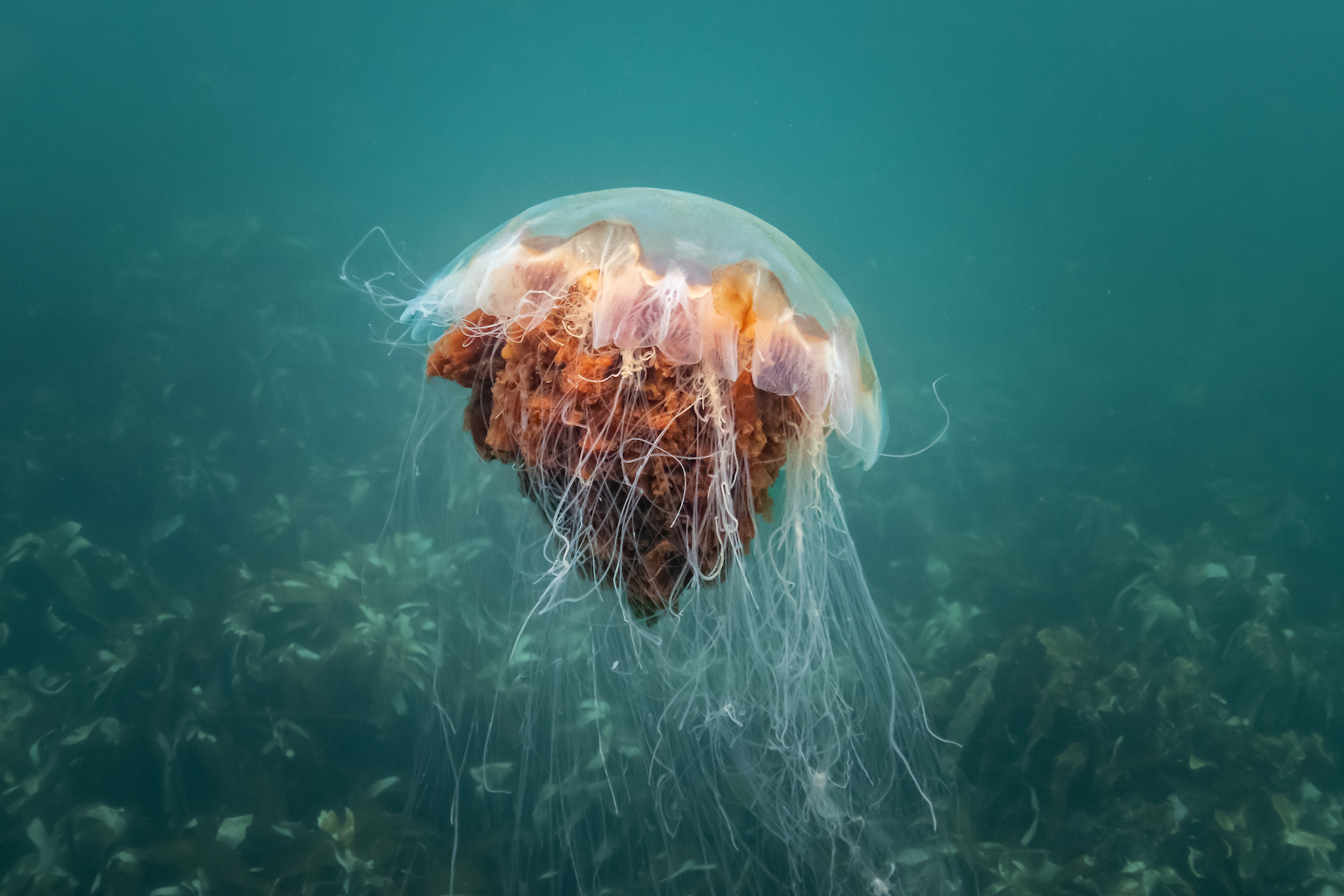
The first in a series of blogs about Scotland Underwater from Ross Mclaren…
Here in Scotland our driech and dreary weather is world famous. But actually, the copious amount of rain that we often moan about, is responsible for a cacophony of colours across our beautiful country.
The one place that might not always be as renowned for being vibrant and colourful is our seas and lochs.
As always there’s exceptions. Our beaches on the north west coast are covered in golden white sand and with turquoise water that might be mistaken for the Maldives… albeit a wee bit nippier… and we’ve even got a few wee lochs (called Lochans) with some pretty green shades to them, but for a good percentage of our coast and lochs, it’s a steely grey mass that greet us.
So, you’d be forgiven for thinking that Scotland’s underwater world mirrors the water it lies beneath. Now, I’m not going to pretend you’re going to be met with a rainbow of colours found somewhere like the Great Barrier Reef, but actually the vibrancy found under the waves definitely took me by surprise.
Disclaimer! I’m no expert in marine biology or underwater photography! I’m pretty much a guy with “all the gear and no idea!” I started out with a wee GoPro and built my camera “rig” up to something that’s now resembling an octopus. But, I’ll be completely honest, I have no real clue what I’m doing in terms of settings, etc. It gets put on “Auto”, I turn the lights on, try not to disturb the marine life and press the button hoping for the best. Quite simply, I’ve fallen in love with our underwater world and do my best to try do it some justice through my photos.
One of the most beautiful marine species I find photographing, and to be honest probably one of the easiest, is the anemones. We have such an abundance of these from deadmens fingers, to firework anemones, and the colours that can be found are just breathtaking. The patterns and shapes they make as they glint in the light of the torches and with the movement of the water is magical.
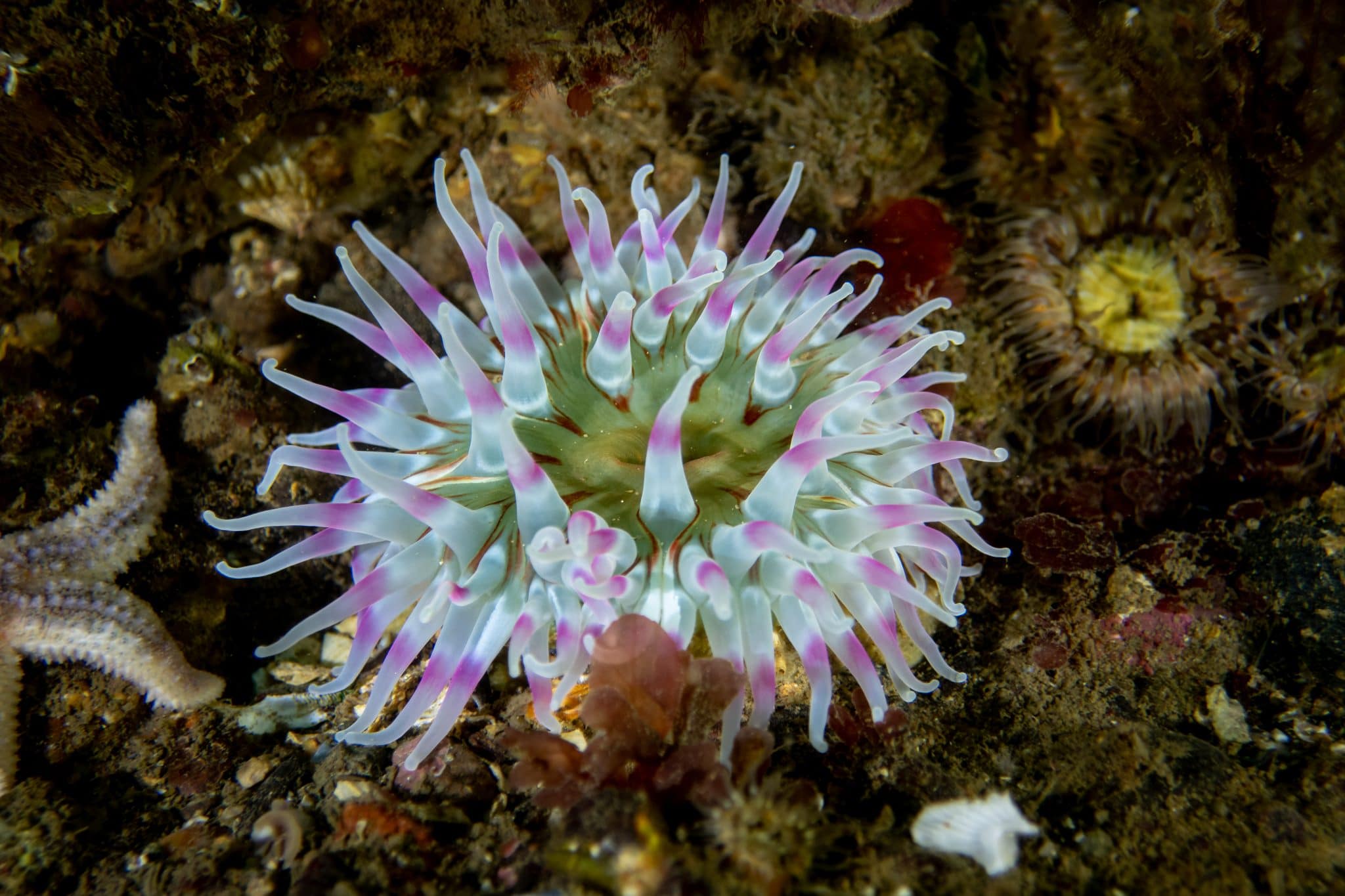
They might not be the most exciting sea creatures but the humble crab is also a fantastic specimen to capture, and again we have a wide variety. I’m not quite sure what it is but you can almost see/feel the attitude oozing out of them when you catch them in the beam of the lights.
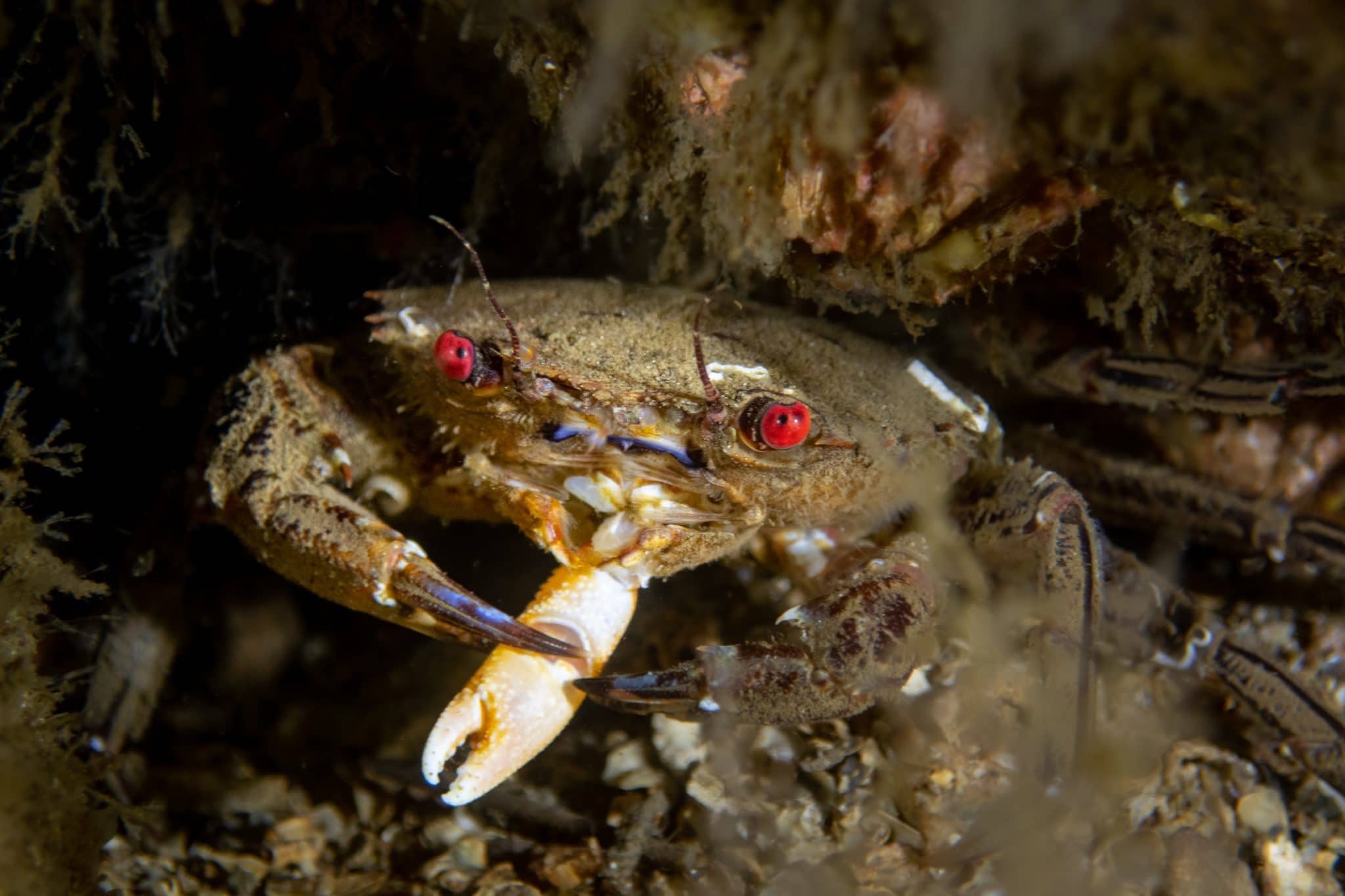
I say this to almost anyone who’ll listen, but I always said I would absolutely love to get sweeping wide angle photo of a wreck. Those are by far my favourite photos to look at. Seeing these hulking feats of human engineering being reclaimed by nature and appreciating the scale of them in one scene is awe-inspiring. Sadly in Scotland with our visibility (well certainly in the areas I frequently dive) it’s not really possible and when it is, it really doesn’t do it justice. However on the flip side Macro photography here is definitely rewarding!
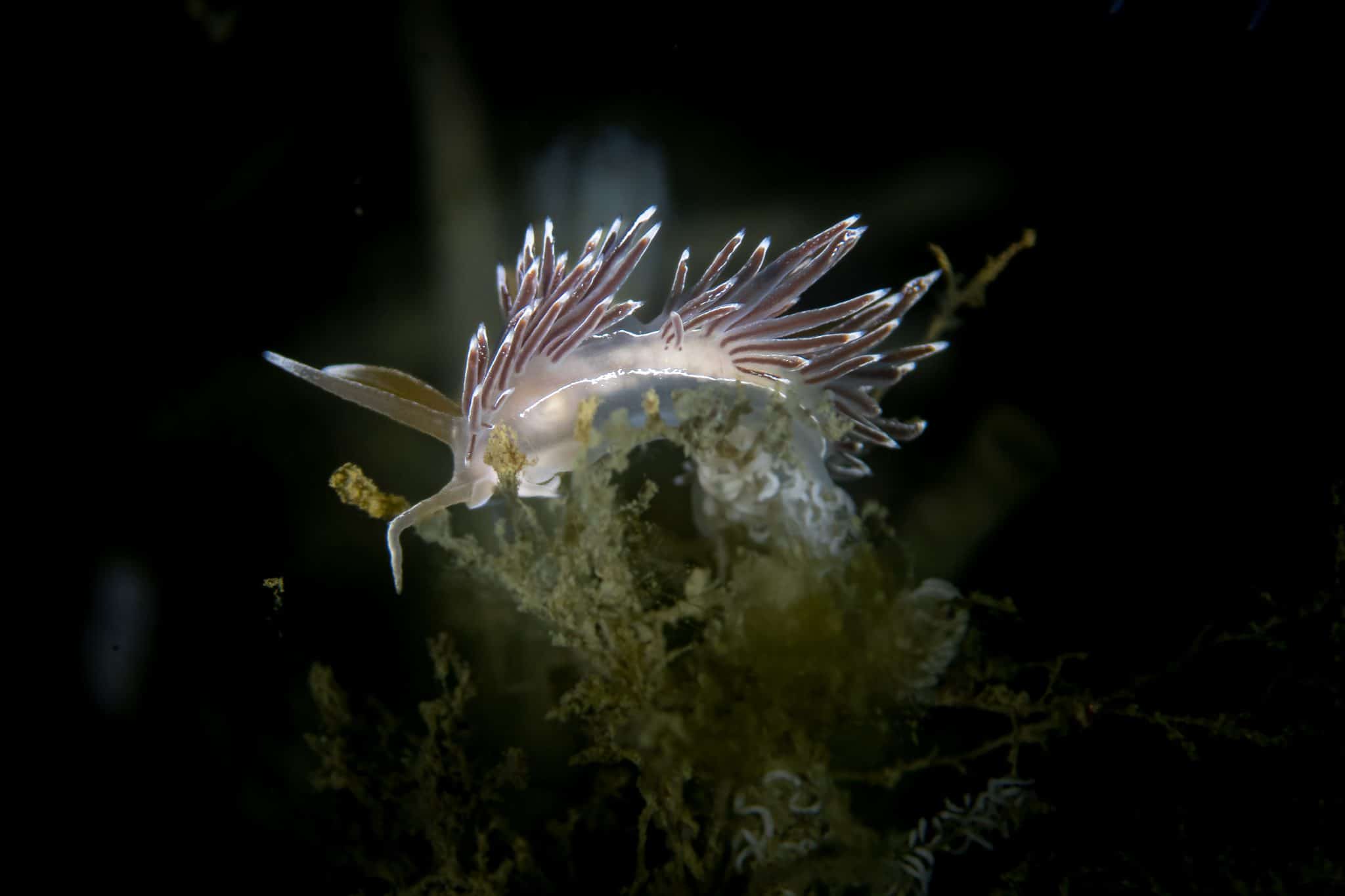
Last summer I had one “photographic goal”… get a nudi! I was desperate to capture a wee sea slug, but no matter how hard I looked I could only find one all year and when I did my GoPro just didn’t do it justice. This year though, well it seems to be a completely different story! Every dive we seem to come across at least one… it also helps when you’ve an eagle eyed dive buddy! With the new camera and macro lens the quality in photos has improved as well. It’s not just the number we’ve seen but the variety we’ve spotted as well! There are so many different kinds, different colours and shapes. It can be a wee bit frustrating trying to hold myself still in the water and getting the camera to focus in on this tiny wee creature, but it’s so worth it!
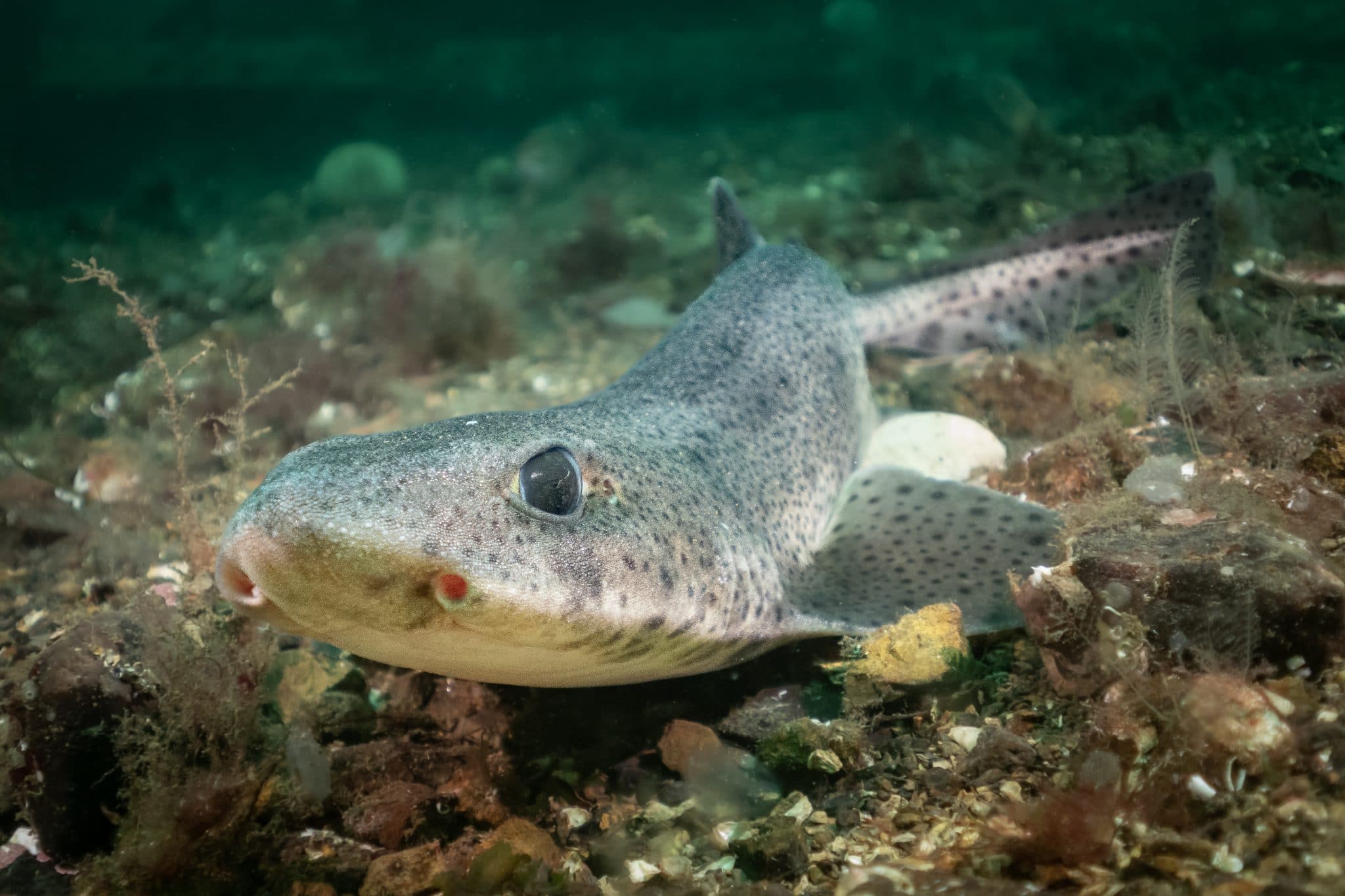
The dogfish/catshark isn’t particularly uncommon in the UK and it’s no different up here in Scotland, if you know where and when to look. They are absolutely stunning to photograph and, although not overly colourful, the texture of their “skin” and their eyes is absolutely incredible.
Now cucumbers are most definitely not my favourite vegetable… but sea cucumbers… those I do love! I genuinely can’t get over how cool they look. They remind me of wee trees and I’m totally mesmerised watching them bring the food to their mouths with their tentacles.

Jellyfish! The scourge of beach goers everywhere! The dread of someone shouting “JELLYFISH” and hoping beyond hope you aren’t caught in a tentacle brings back childhood memories. So until I started diving the “evil” jellyfish was much feared. However, since I started exploring the underwater world and seeing them in all their glory, I have come to appreciate jellyfish for they unbelievable beauty and grace. I love watching them float past (from a distance!) and seeing the shapes they take in the water. They are so full of grace!
Even the most dived sites can throw up a wee surprise every now and again. We’d headed to one our usual haunts with the main goal of logging a couple of deeper dives just to build up to Scapa later in the year. We descended down to around 38m where we planned to swim along for a wee bit before ascending again. There were a few rocks, but generally not much life but I took the camera anyway, you know, just in case.
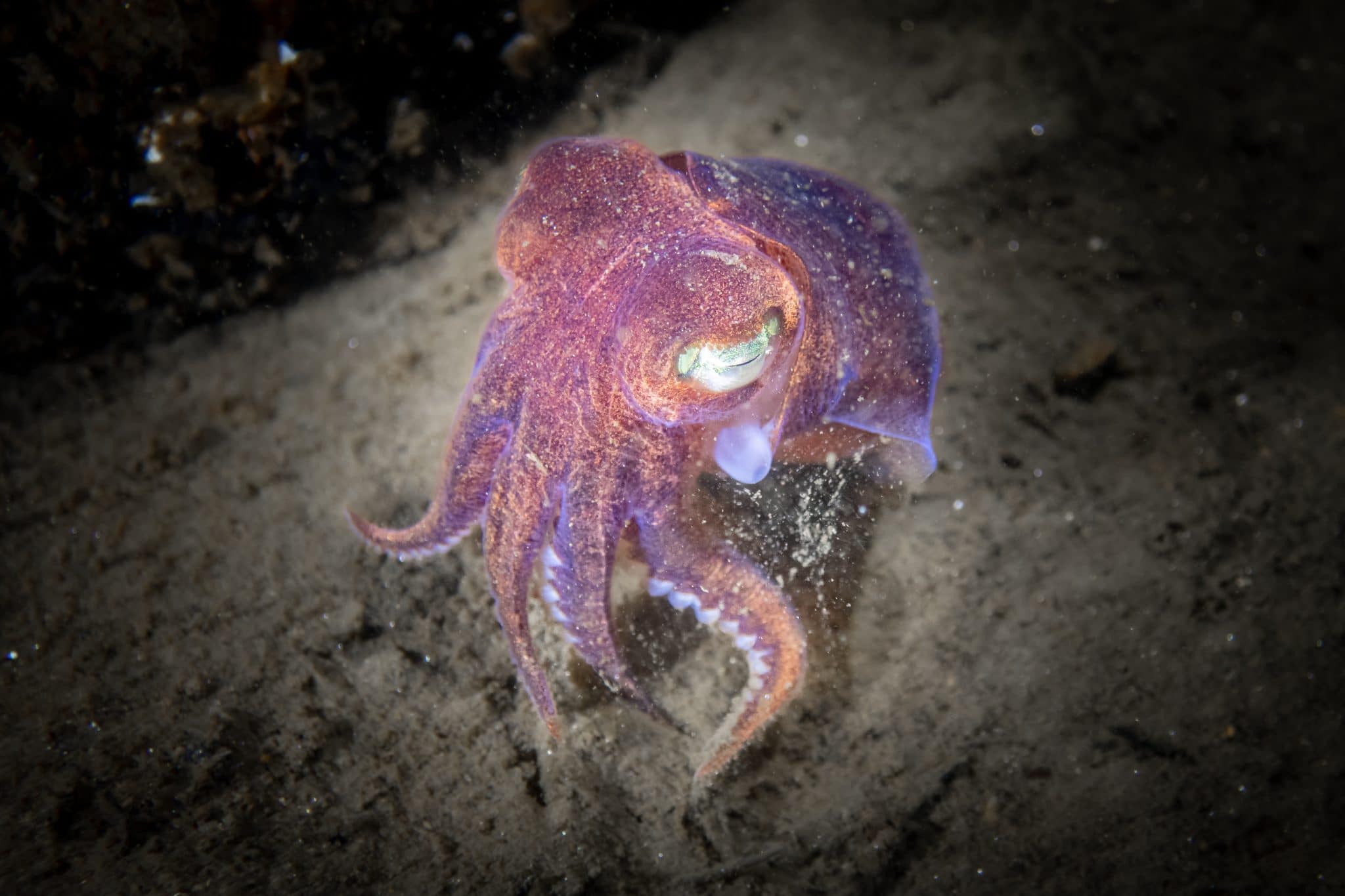
Now these guys aren’t completely uncommon here on the west coast, but they’re mainly found at night and until now I’d never spied one, let alone photographed one! Bobtail Squid/Little Cuttlefish! I’m not going to lie, I was so excited! I actually thought I was slightly narked as it appeared out of the sand. This wee fella was so cool! The colours were absolutely breathtaking and getting the opportunity to photograph them was just amazing.
Scotland isn’t the diving capital of the world; we’re not going to suddenly become a top dive destination on many diver’s bucket lists. BUT we do have some incredible marine life, with such unbelievable colours! Although it’s not the easiest diving you’ll ever do, when you do get that moment it makes it feel all the more special.
For more from Ross, follow him on Instagram @underwater.ross and on Twitter @outdoorsross.





